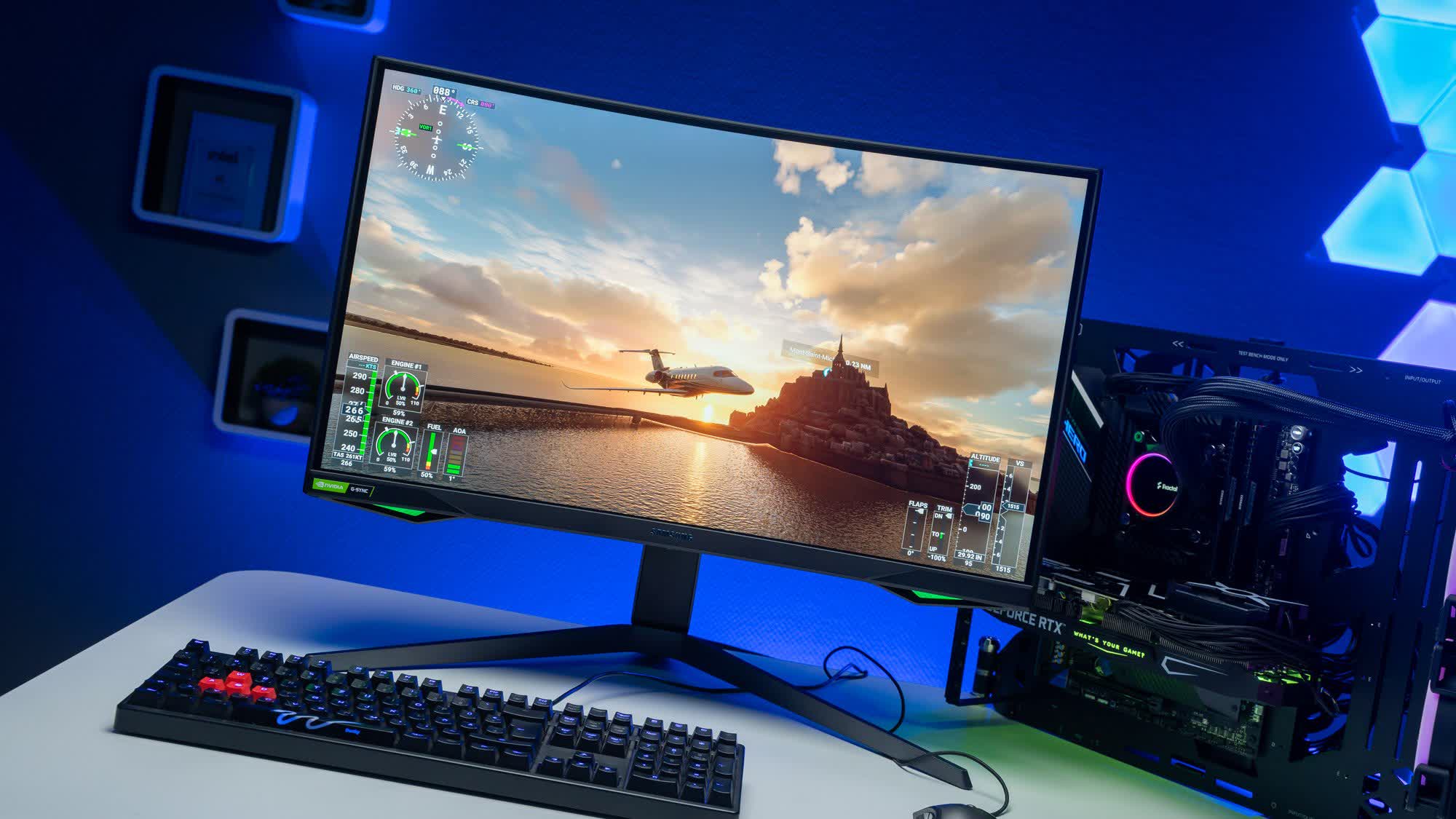See our latest update to this buying guide: The Best Gaming Monitors
We've been reviewing and covering gaming monitors and putting together recommendations for distinct categories including 1080p, 1440p and 4K gaming monitors for the past few years. In this guide, we're going to go through everything we've learned so far and all the latest models we tested to give you comprehensive advice on gaming monitor shopping.
In the past year we updated our monitor testing methodology, testing 60+ displays. As we've discussed before, we tend to discuss and recommend only the monitors we've tested and know to be good, or monitors that are very similar to products we have tested (same panels, etc.). It's always worth going back and checking out the dedicated monitor reviews we produce for more in-depth thoughts on each, but most importantly the recommendations below are the byproduct of our testing results and research.
We've grouped monitors in five main categories: 1080p, 1440p, 4K, ultrawide and HDR, with several recommendations on each, depending on the level of refresh rate you are targeting, display size and budget. We should note, we can't test absolutely everything that's available on the market but since we have tested a ton of these, we're primarily discussing the monitors we've personally tested and know to be of top quality.
Masthead image credit: Allround-PC
- Best 1440p Value
- Best 1440p @ 240Hz
- Best 1440p 32-inch
- Best 1080p
- Best 1080p Value
- Best 4K Gaming
- Best Ultrawide
- Best HDR Gaming
Best Value 1440p Gaming Monitor
Gigabyte M27Q 27"
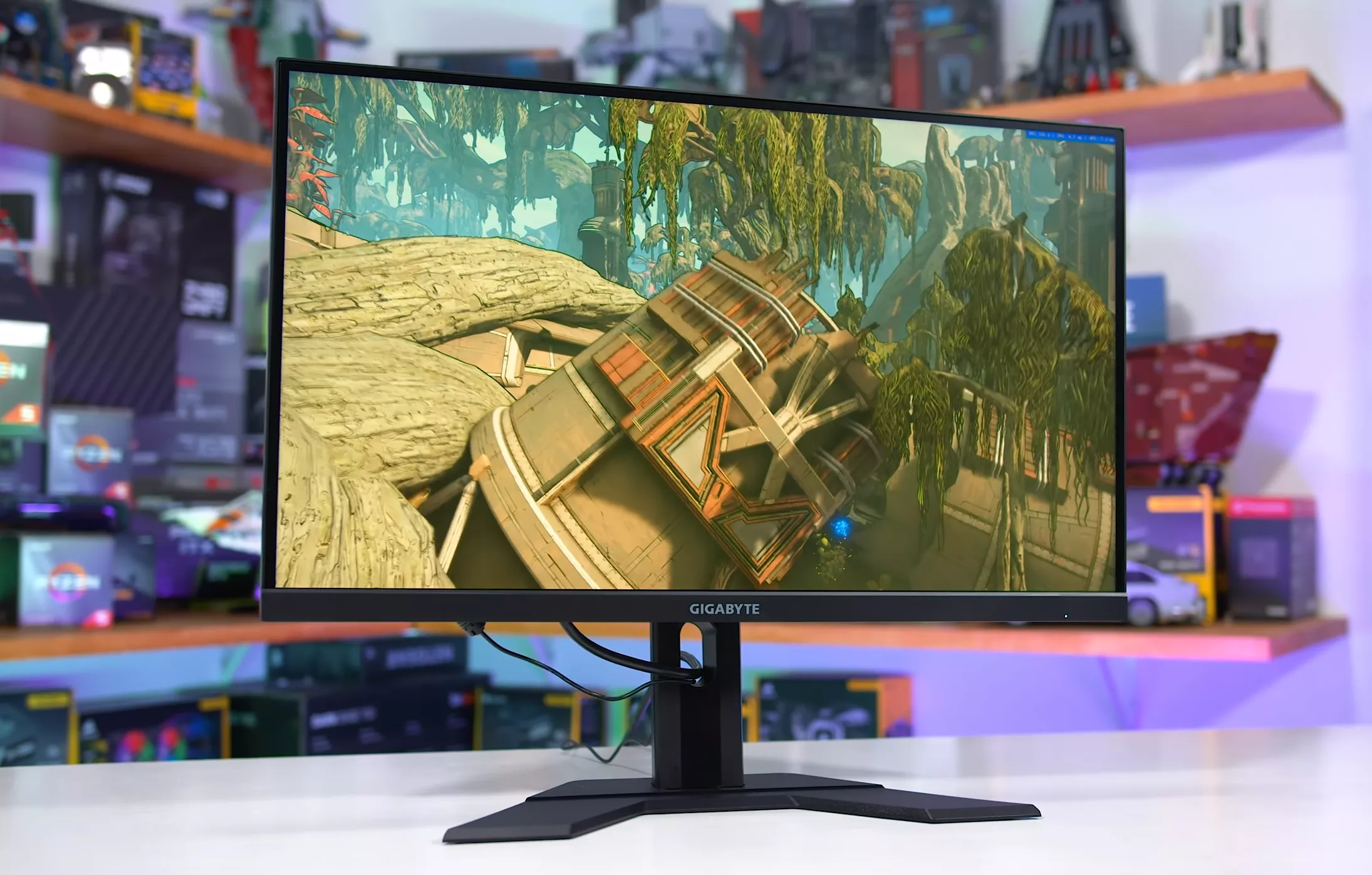
The best budget 1440p monitor right now is the Gigabyte M27Q. Typically retailing for a bit over $300, the M27Q offers excellent value and bang for buck in the 1440p category, it's got a 170Hz IPS panel, and includes useful feature additions like a KVM switch.
The Gigabyte M27Q delivers decent mid-range response time performance, a wide color gamut with an sRGB mode, great ergonomics thanks to a height adjustable stand, fantastic viewing angles, and solid contrast for an IPS. It delivers an excellent mix of gaming performance and color quality at this price point, outperforming many other mid-range displays, which are often more expensive. It's hard to go wrong with this display and the price continues to be aggressive for what you get.
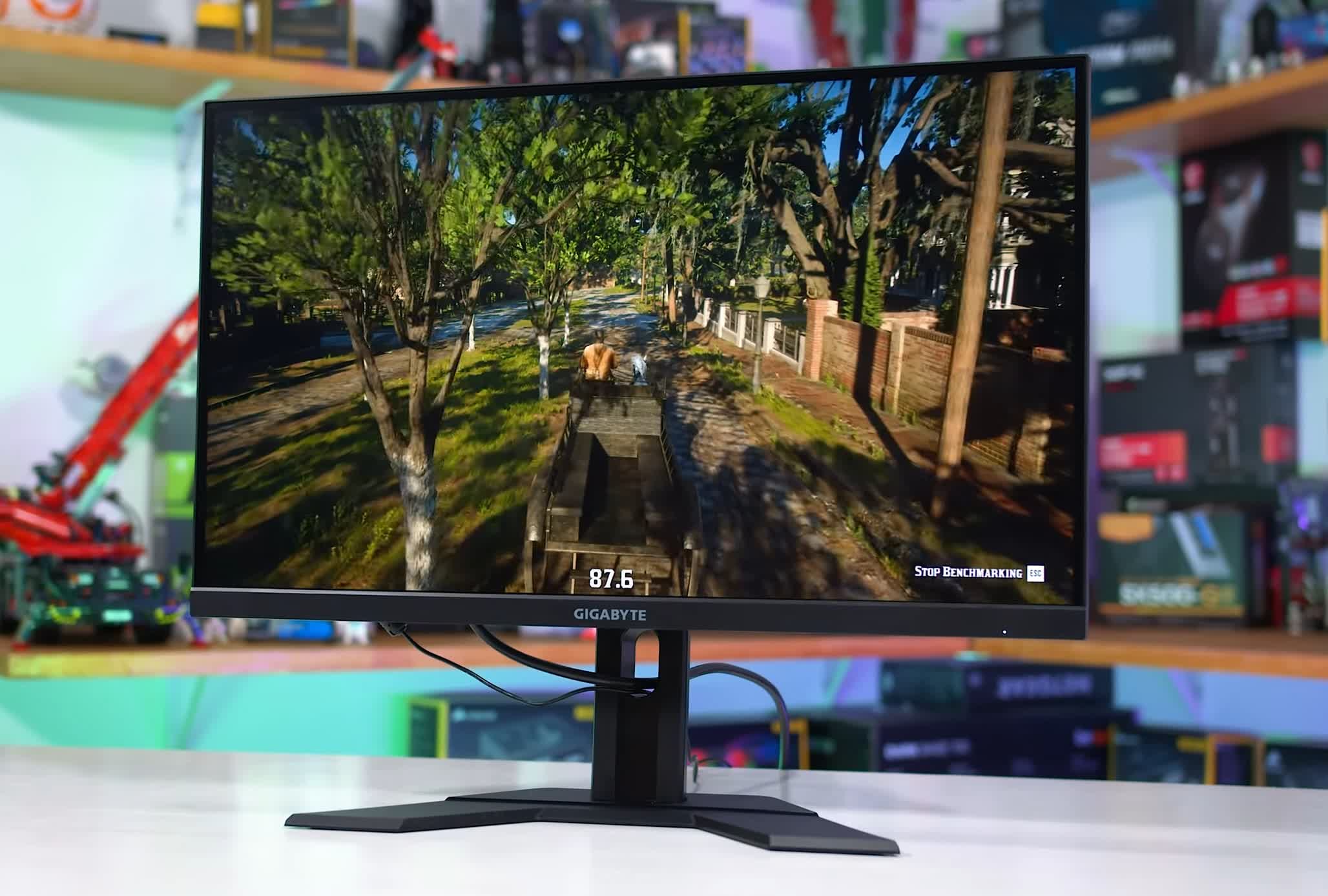
The main downside to this monitor is the use of an IPS panel with a BGR subpixel layout instead of the conventional RGB layout. This has a small effect on text clarity in some use cases, although we've personally found it to only be a minor issue in Windows applications after a run through with the ClearType utility. We'd recommend it regardless of this issue, or alternatively the Gigabyte G27Q might be worth considering at a similar price. We'd also look at the MSI Optix G273QF as an alternate option, though we haven't tested it and it's more expensive.
Between the M27Q and MAG274QRF-QD (our top 1440p 144hz pick) you have two excellent options at two distinct price points: a cheaper, bang for buck option for budget shoppers; and a more premium product that also doesn't break the bank.
Dell and LG options
Several other monitors were up for consideration in this category. In the past we've recommended the Dell S2721DGF as an option, and it's still great value today at $330. The Dell monitor is a bit faster on average, has a wider color gamut and a normal RGB subpixel layout, but it has a terrible contrast ratio, doesn't include an sRGB mode at all, so it's prone to oversaturation, and lacks the KVM switch.
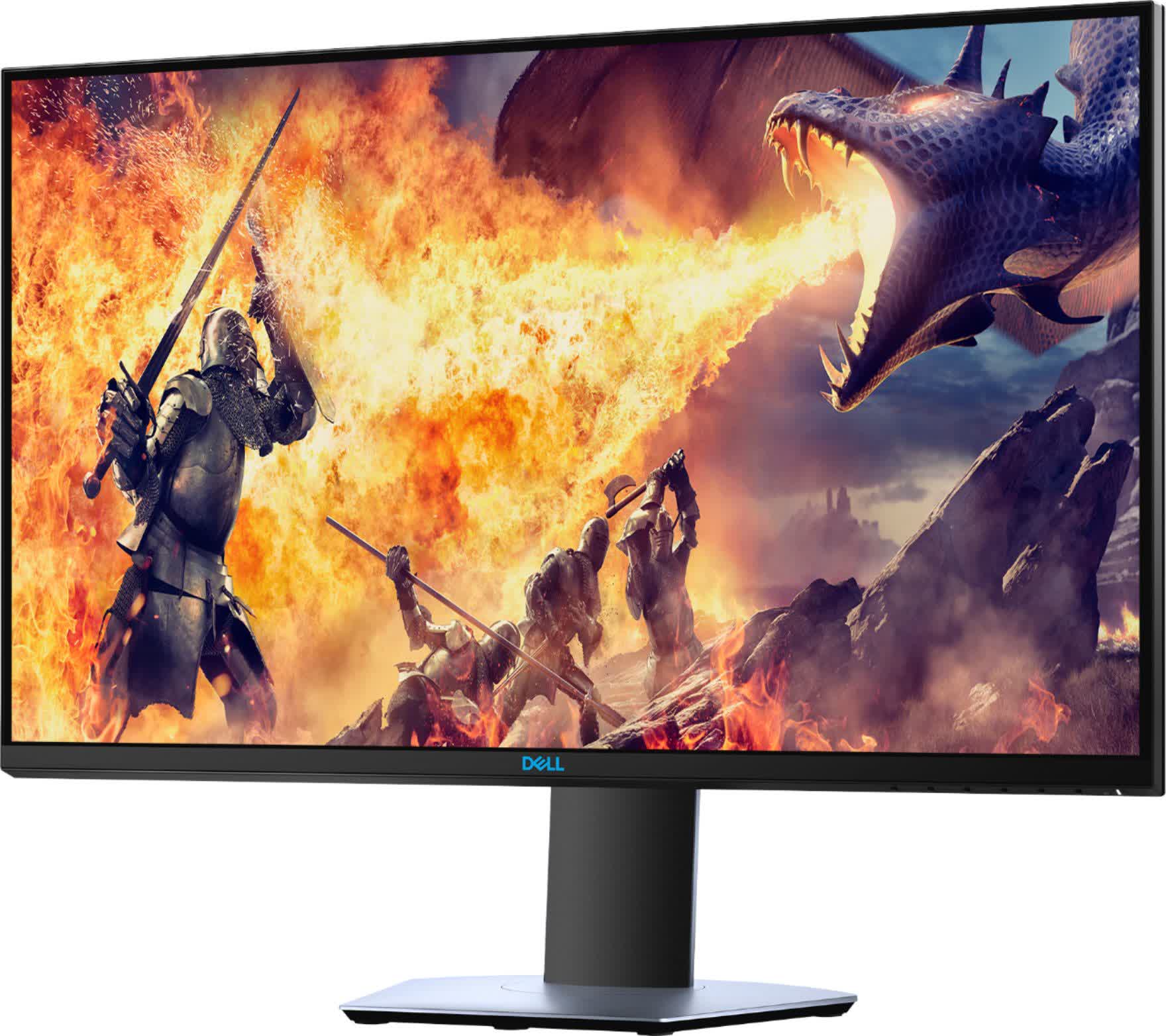
It's a similar story with the LG 27GP83B, which is a slightly better but also more expensive version of the S2721DGF. Most monitors that use LG's Nano IPS panels aren't competitive enough with the M27Q, and begin approaching the price of the MAG274QRF-QD which is simply better.
Going Cheaper with VA?
The price floor for 1440p IPS monitors with a 144Hz refresh rate is approximately $300, so what are the options below that? That's where we get into VA monitor territory, and we honestly would not spend more than $300 on a budget or mid-range VA as they get smoked in response time performance by the M27Q and better IPS displays.
Aside from the Samsung Odyssey G7, other VA panels are simply not competitive at higher price tiers where IPS is dominant. But VA does have its place in the market. If you only have $250 to spend, then your options are either a budget curved 1440p 144Hz VA, or a 1080p 144Hz IPS and for a lot of people the resolution difference makes the 1080p option a no-go. You'll have to deal with VA's dark level smearing, inferior response times, worse viewing angles, less expansive color gamuts, and the abundance of curved panels – but as an entry level option, we still think they are reasonably good.
Response time performance is often not too far away from budget IPS monitors, the difference mostly amounts to dark level smearing. You still get better viewing angles than TN monitors, excellent contrast ratios, which are great for gaming in dark environments, and decent color quality overall. Most budget VAs use a variation of the same Samsung VA panels, so the differences in performance between them are small. The Samsung Odyssey G5 and AOC CQ27G2 are two options we'd be looking at, provided you can get them for $260 or less.
Best 1440p Gaming Monitor @ 240Hz
Asus ROG Swift PG279QM 27"

If you want a truly high-end 1440p gaming monitor in 2022, the place to be is in the 240Hz range, where high refresh rate gaming is very attainable. Having a 240Hz refresh gives you the flexibility to play competitive games like Fortnite, Overwatch, and CS:GO with very low latencies and smooth gameplay, while also enjoying single-player titles at a decent resolution and ultra quality settings, but at a lower refresh rate. If you choose the right product, you'll end up with something very future proof as GPU power continues to rise.
There are a few ways to go in this market segment, so we'll start with the outright best monitor you can get.
The Asus ROG Swift PG279QM is a 27-inch 1440p 240Hz IPS monitor that ticks almost every box you could want, and nails performance in all areas. It's very fast. On average across the refresh range it's the fastest 1440p IPS monitor we've tested based on cumulative deviation, which measures the balance between response times and overshoot.
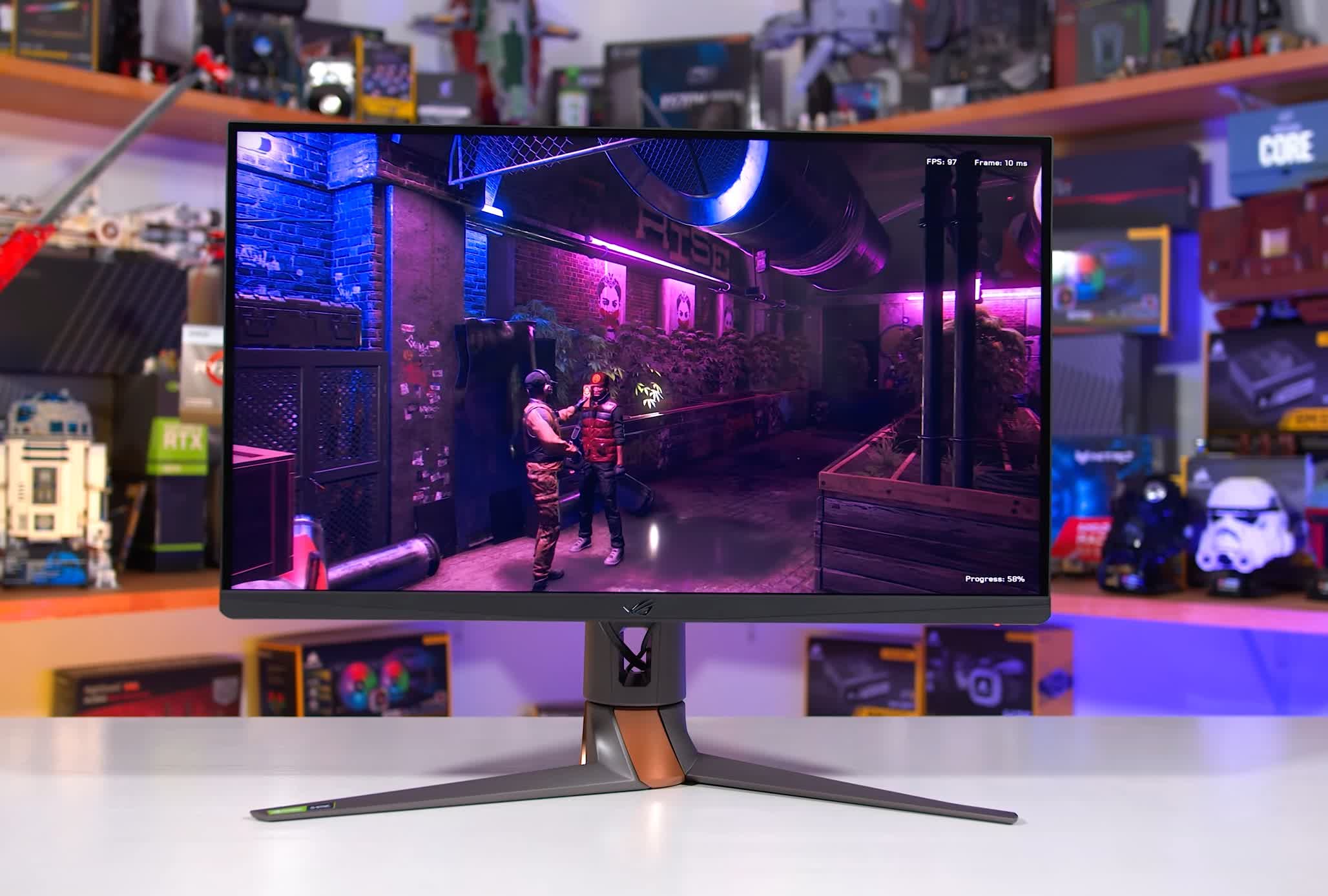
The PG279QM is so well balanced that it has minimal overshoot artifacts at all refresh rates, and benefits from variable overdrive to keep performance the best it can be at all times. It truly has a single overdrive mode experience, and I was very impressed with its motion performance overall.
The Asus is also versatile as the PG279QM has outstanding color performance. This is a very wide gamut monitor with great coverage of DCI-P3 and Adobe RGB, plus it has elite factory calibration including one of the best sRGB modes we've tested. If you just want a monitor that looks excellent and performs to the top of its ability straight out of the box, the PG279QM is the way to go.
From a hardware perspective, there's nothing better that we've tested, but the luxury does come at a price: at $900, this is an expensive 1440p monitor in 2022, as we've seen 240Hz pricing steadily fall over the last year or so. But if you really want the best, you'll have to pay for it.
More 240Hz options that are more affordable
If you're looking for something a bit more bang for buck, while still delivering excellent performance, there's a few ways to go. For an IPS monitor that's most similar to the PG279QM, we recommend to check out the Acer Predator XB273U GX. It's $250 cheaper than the Asus model for essentially the same sort of panel. It lacks some of the features and performance of the Asus – for example, it doesn't have variable overdrive – so response performance isn't as good, and factory calibration isn't as tight or impressive.
But if you're not after the absolute best in all areas, then the Acer delivers better bang for buck and is what many buyers should consider as the next best option. I would also choose the Acer Predator over most other IPS alternatives like the Alienware AW2721D and Gigabyte Aorus FI27Q-X which are either more expensive, worse performing, or both.
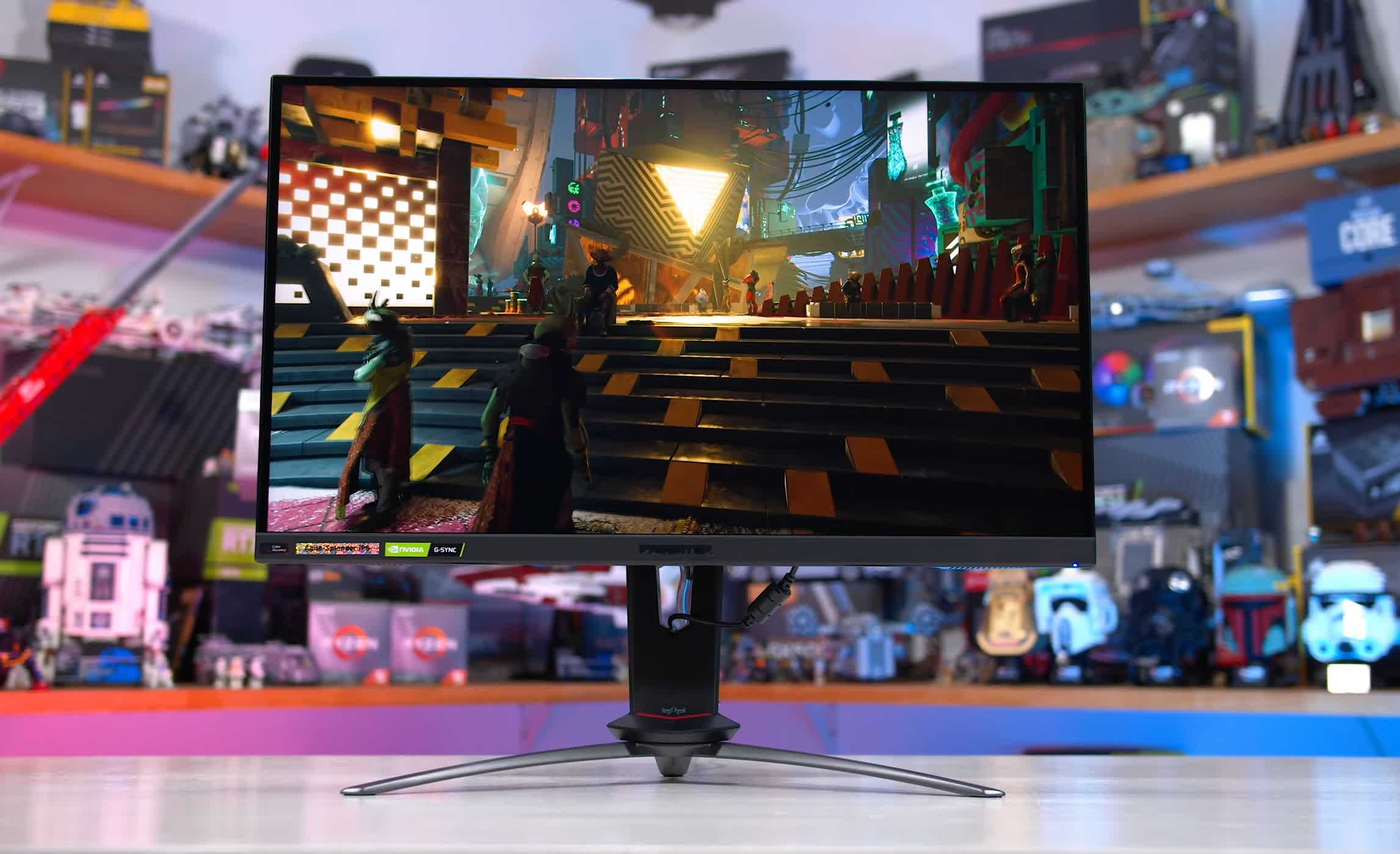
Another strong option to consider is the Samsung Odyssey G7. Pricing has come down recently and we've seen it selling for as little as $550. The 27-inch 1440p 240Hz VA model is an excellent deal at that price.
The main reason to get an Odyssey G7 is that you want speed. This monitor has excellent motion performance, it's faster and slightly clearer than its IPS competitors with no typical VA issues like dark level smearing. It also has a much higher contrast ratio with deeper blacks, a key selling point and crucial if you plan on playing games in a dark room.
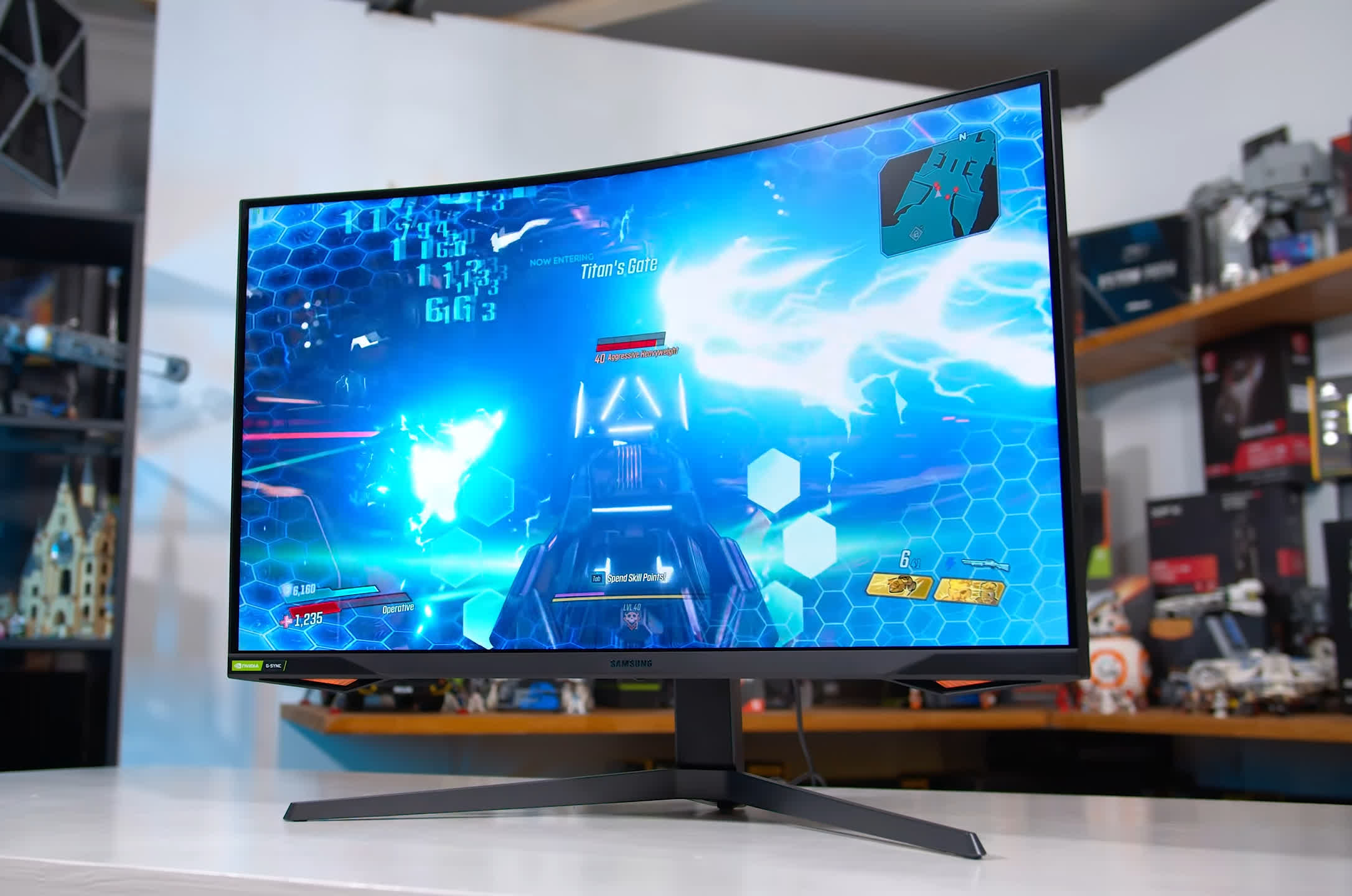
However, to hit these high levels of performance, there are trade-offs in other areas. The general color experience isn't as good or versatile as you'll get from an IPS monitor. The color gamut isn't as wide, viewing angles are worse, and the aggressive 1000R curvature isn't ideal for content creation.
Samsung has also had quality control issues surrounding these monitors, which should be factored in. But it's still a solid monitor for pure gamers out there.
Best 32-inch 1440p Gaming Monitor
Gigabyte M32Q 32"
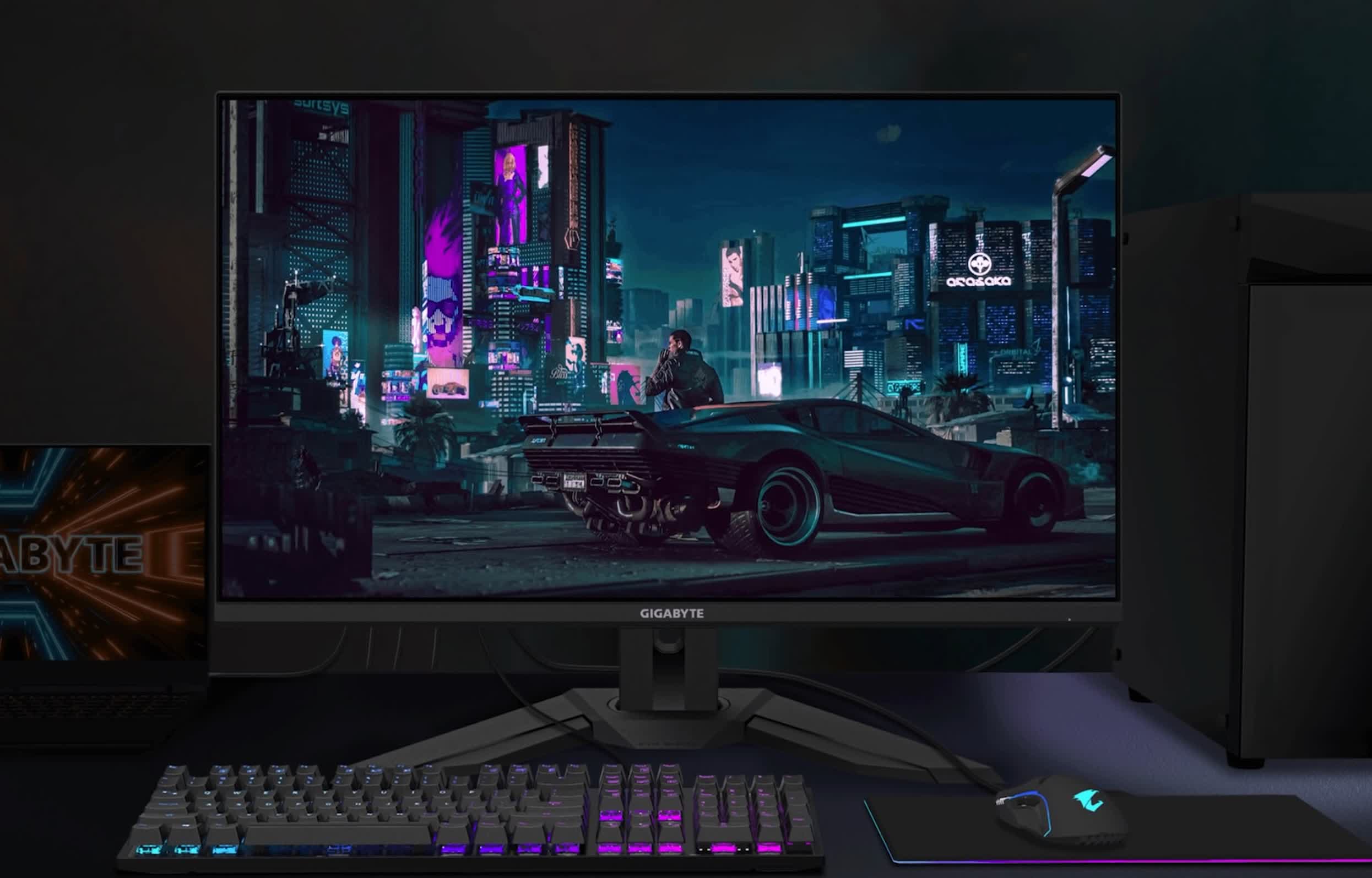
All the monitors we've been talking about so far have been 27-inch options, which we feel is most suited to the 1440p resolution. But some gamers may also want something a bit larger, and a 32-inch 1440p monitor is that next logical step. There's a clear standout in this segment, and that's the Gigabyte M32Q.
For just $450, there's little reason to look for anything else when the M32Q provides everything you'll be after at a highly competitive, and often the cheapest, price point. There are no areas of class-leading performance with the M32Q, but likewise there are no huge weaknesses, meaning the Gigabyte option is a really well balanced gaming monitor.
The Gigabyte M32Q performs very well with motion performance that is in line with most modern IPS gaming panels, especially when looking at cumulative deviation that gives us an idea of the balance between response times and overshoot. Its 170Hz refresh rate is decent, low input lag, of course, and Gigabyte complements this with a backlight strobing feature that works in conjunction with adaptive sync.
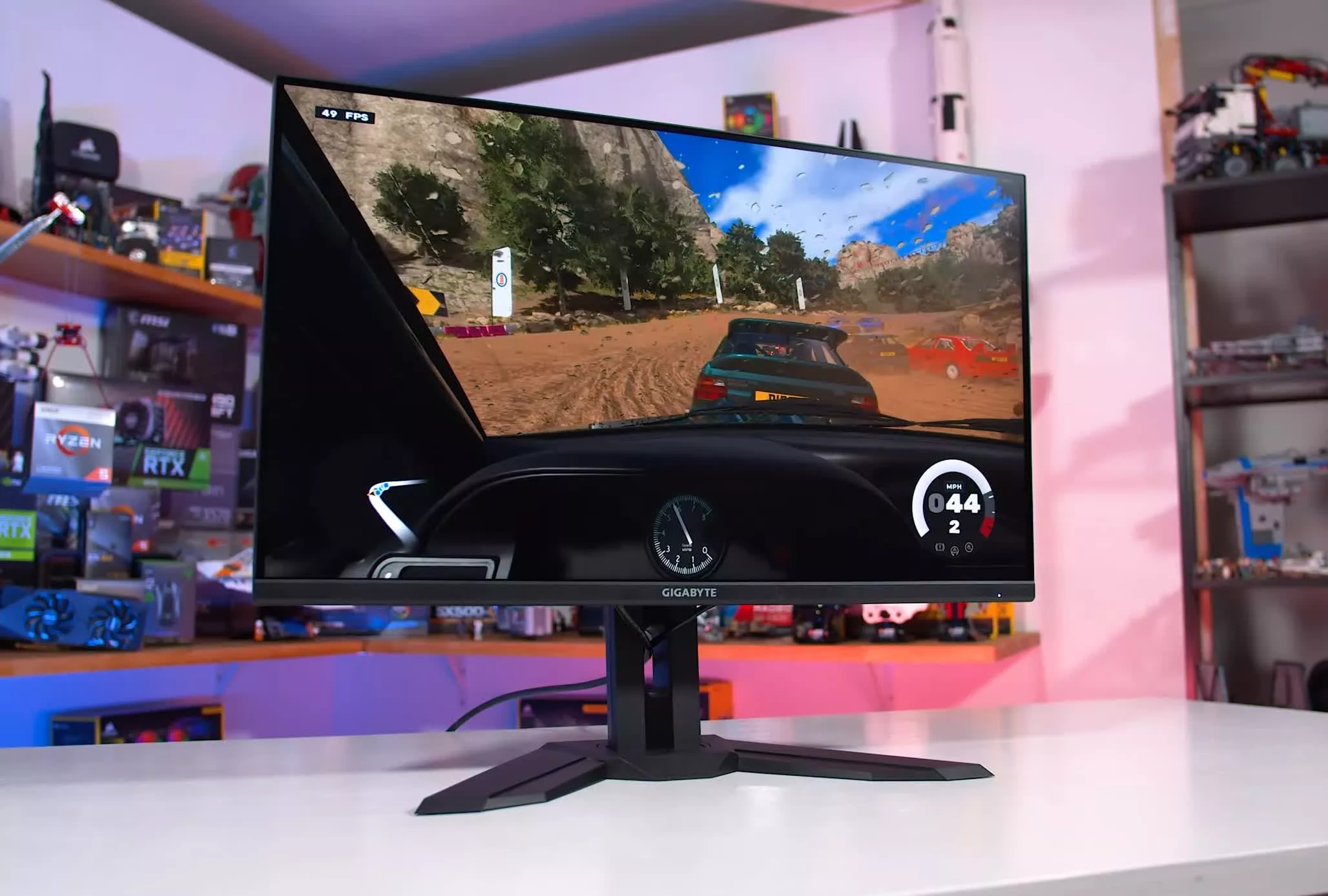
For color performance we're getting all the usual benefits of IPS – a flat panel with excellent viewing angles, a wide but not that wide gamut, and in this case an above average for an IPS contrast ratio. I wouldn't necessarily describe this as an ideal monitor for content creation, but it has a level of versatility that's suited for playing games and watching videos.
Competitors such as the LG 32GP850 are typically more expensive for similar levels of performance, and the monitors that used to dominate this category – 32-inch curved VA models – just don't come close in performance and often have issues with dark level smearing. IPS is the way to go in this category these days.
The Best of the Best at 32-inches
But some might want the best of the best, and there are certainly options to satisfy that.
The Asus ROG Swift PG329Q is a souped-up version of the M32Q. Faster response times, better response tuning overall, wider color gamut. The reason why we typically don't recommend it, is that it costs $700 versus $450 for the Gigabyte, and it's not worth that price difference for most.
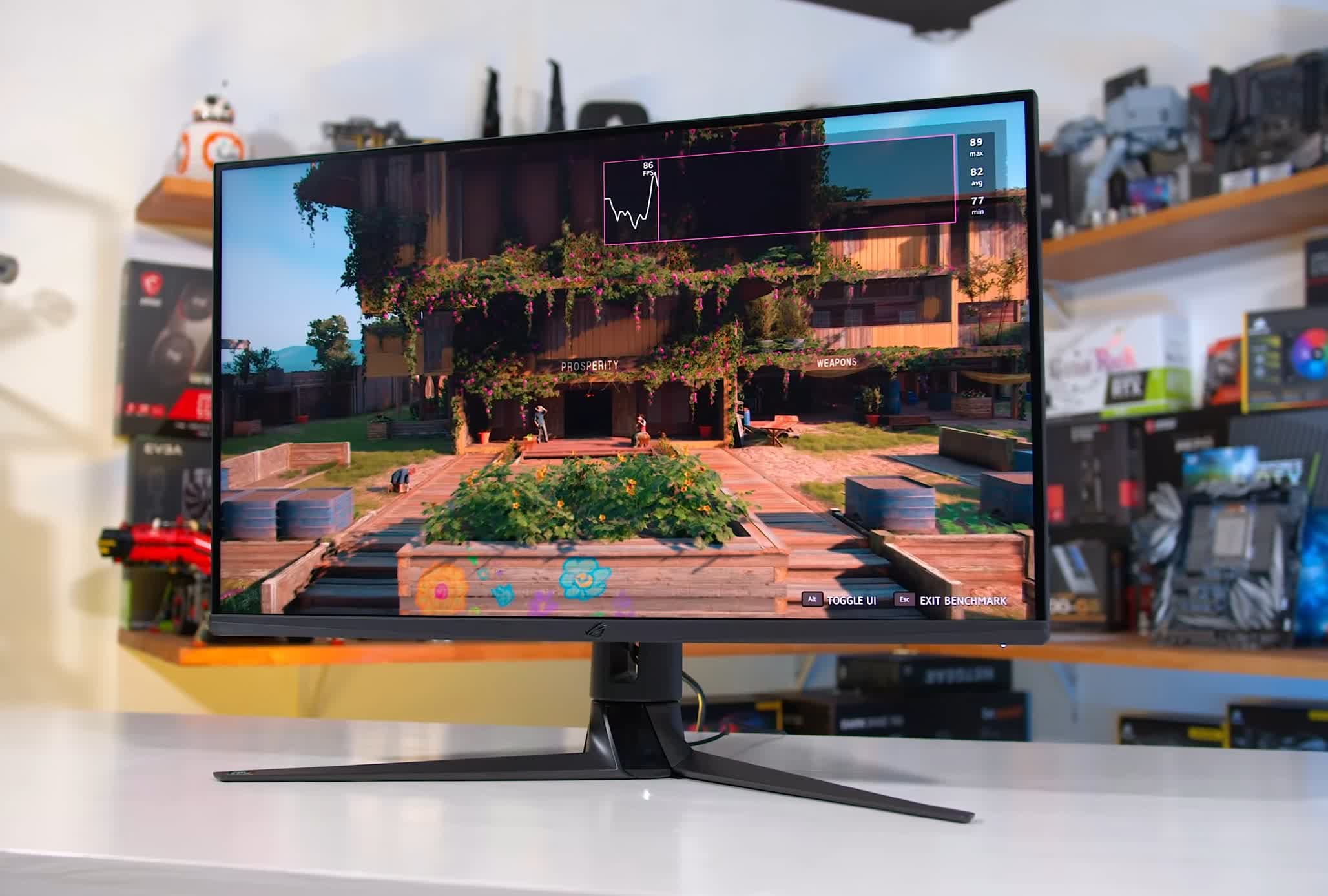
There are a few other models to consider. We've already talked about the Samsung Odyssey G7 and that's available in a 32-inch variant for around $750. It's basically the same as the 27-inch but larger, and while not as good value when going for the larger size, it's still a highly capable monitor.
On the IPS front, we have new entrants such as the Gigabyte Aorus FI32Q-X and Acer Predator XB323U. We haven't tested this panel yet, but reliable reviewers like TFTCentral think it's pretty good, so that's something to consider. These are expensive options, typically retailing for over $900 however.
Best 1080p Gaming Monitors
Asus TUF Gaming VG259QM 24.5"

The 1080p monitor segment hasn't seen many standout releases this past year, however the good news is that prices have crept back down to where they should be. Some of our favorite options that were out of stock for weeks are now readily available and at great prices. The main reason to buy a 1080p monitor in 2021 is you want something affordable, specifically for below $250, which is a market that 1440p isn't servicing well yet. 1080p monitors are the cheapest you can get at a medium 144Hz refresh rate, and are far cheaper than 1440p options at 240Hz as well.
The most compelling 1080p monitor right now is the Asus TUF Gaming VG259QM, which is available on sale at some retailers for just $230. The V259QM is a 24.5-inch 1080p flat IPS monitor with a 280Hz refresh rate, and this is one of the cheapest 240Hz+ IPS monitors we've ever seen. This is a great entry point for high refresh rate gaming and is an awesome buy for esports gaming and competitive shooters in general.
We've reviewed the larger variant of this monitor, the VG279QM, and found it to be excellent with solid response times typical of current-generation IPS panels, great factory calibration with a no-fuss sRGB color gamut, and low input latency. The use of an IPS panel delivers far better color quality, viewing angles and contrast to that of TN alternatives, so even though it's not as fast as the best TN monitors, it's a better choice for everyday usage that might include stuff other than gaming. The 24.5-inch size of the VG259QM is also ideal for 1080p, and the build quality, including a height adjustable stand is solid.
Best of the Best at 1080p
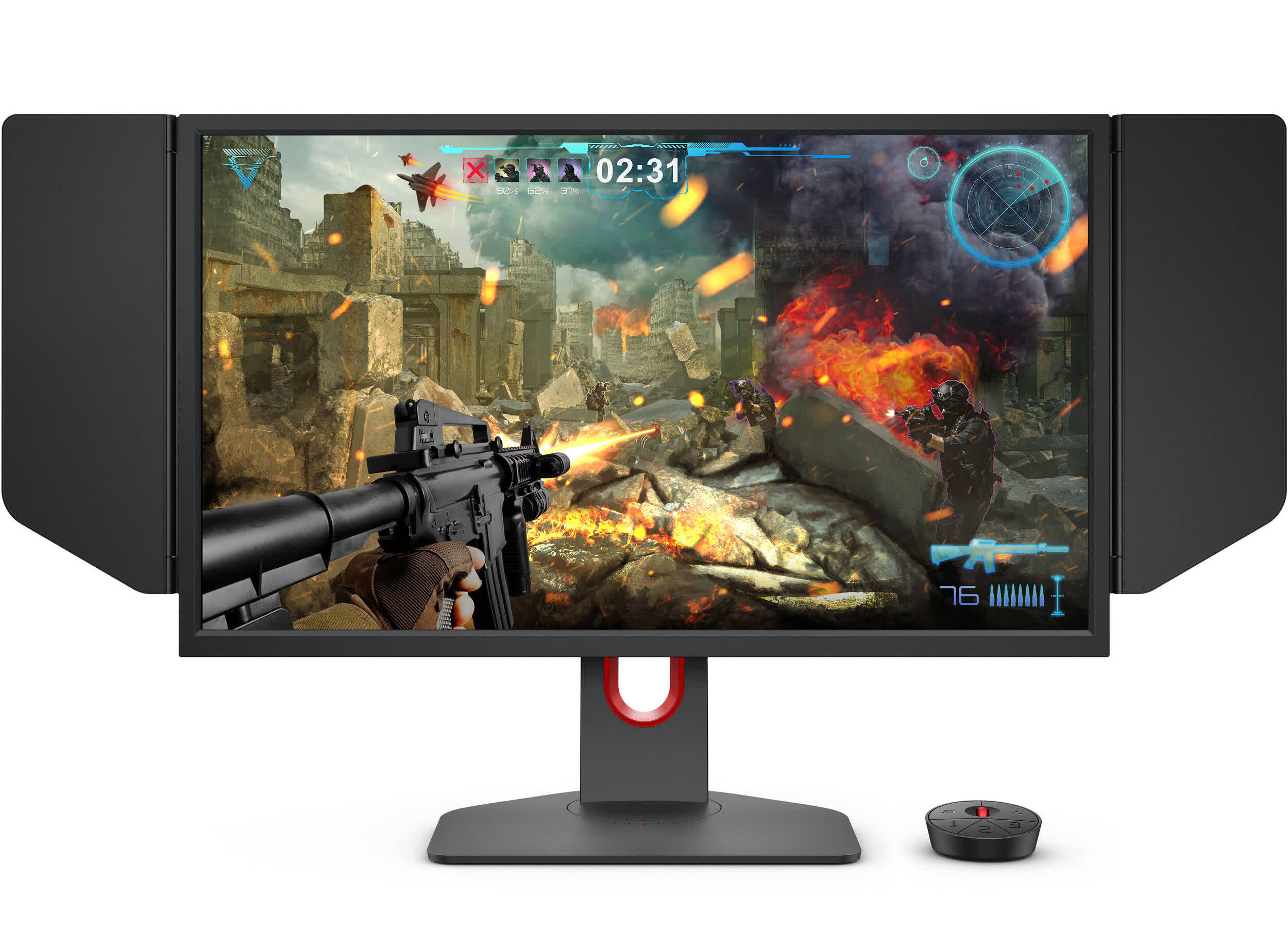
If you want the absolute best of the best at 1080p, check out the BenQ XL2546K which has been specifically designed for esports gaming. It's expensive at $500 and that will make it a niche buy, but the XL2546K has class-leading backlight strobing technology which when combined with its elite TN response times delivers unbeatable motion clarity. Literally, you will not be beating this with a different 1080p monitor, at least from what I've seen. If speed and clarity is the number one priority for you, and you have a large budget, look no further than this BenQ monitor.
Best Value 1080p Gaming Monitor
AOC 24G2 24"
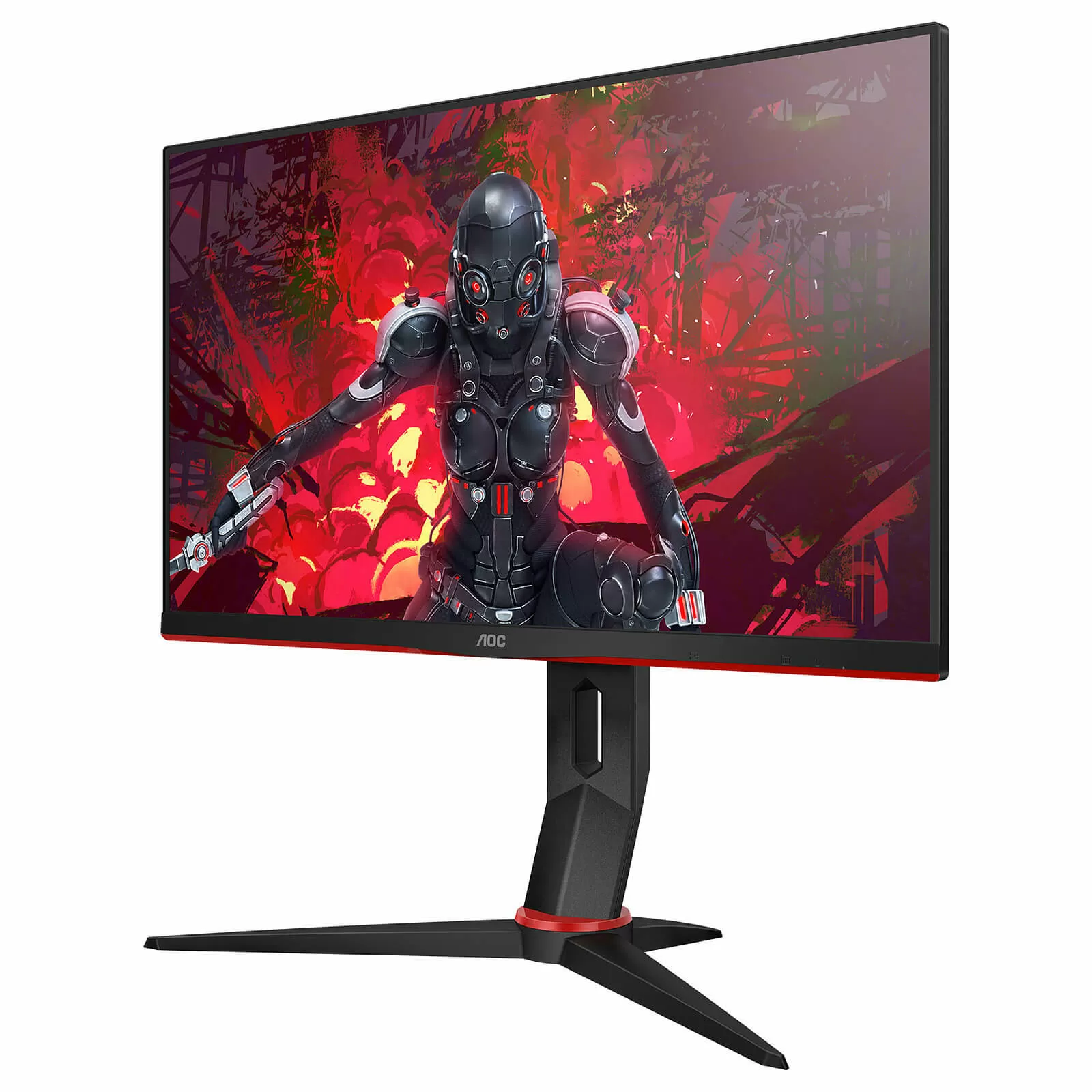
The AOC 24G2 remains in the leading position for a value-oriented 1080p option. For $170, the 24G2 delivers an excellent experience, bringing a 24-inch 1080p 144Hz IPS panel that performs well and packs solid color quality - regardless if you get the original 2019 variant or the updated 2020 variant.
It also includes an ergonomic stand with height adjustment, often omitted from other budget 1080p monitors. The overall package AOC is offering is balanced between gaming performance and image quality, so I'm comfortable continuing to recommend it.
Other options considered included the MSI G242 and Gigabyte G24F, but both are more expensive and don't appear to be offering anything better than the AOC. I've also liked the performance BenQ delivers with the EX2510. It's a better all round package than the AOC 24G2, but it's very hard to justify at $250 when the Asus VG259QM is just $230.
Is there anything worth buying if I have less than $170 to spend?
Unfortunately, the answer is mostly no. You can shave off around $10 opting for a curved VA panel instead, with 1080p 144Hz specifications. However, we've typically found these monitors perform much worse than the 24G2 with unsightly issues like dark level smearing, making them not worth the minor price saving. The same can be said about TN monitors that can be found for around $150, you will be sacrificing performance in general for a small discount.
These days monitors that top out at 144 to 165Hz are more medium-refresh rate, given the prevalence of 240Hz and above especially at 1080p. This is by far the most popular category for 1080p buyers, and there's a serious wealth of options to choose from, which makes picking one out quite tricky. For this reason, we're splitting this category in two brackets: the best quality IPS offering and the more budget oriented monitors for cash strapped gamers.
It should be noted that the best value option will vary based on your location and local pricing. And while this is usually the case, today there's more volatility in the monitor market and supply issues are affecting displays, just not to the same extent as other PC components.
For most people, our top recommendation for 1080p 144Hz is the AOC 24G2. The 24G2, and the larger 27-inch variant (27G2), include an IPS panel, adaptive sync and a refresh rate that tops out at 144Hz. We were impressed with the build quality that includes features like a height adjustable stand, not often found on more budget oriented displays. But one of the key features, especially of the newer 2020 variant, is response time performance, which is very strong and in some ways as good as higher-end 1440p monitors. The 24G2 is among the best 1080p IPS monitors we've tested for motion clarity, which makes it a great choice for gaming.
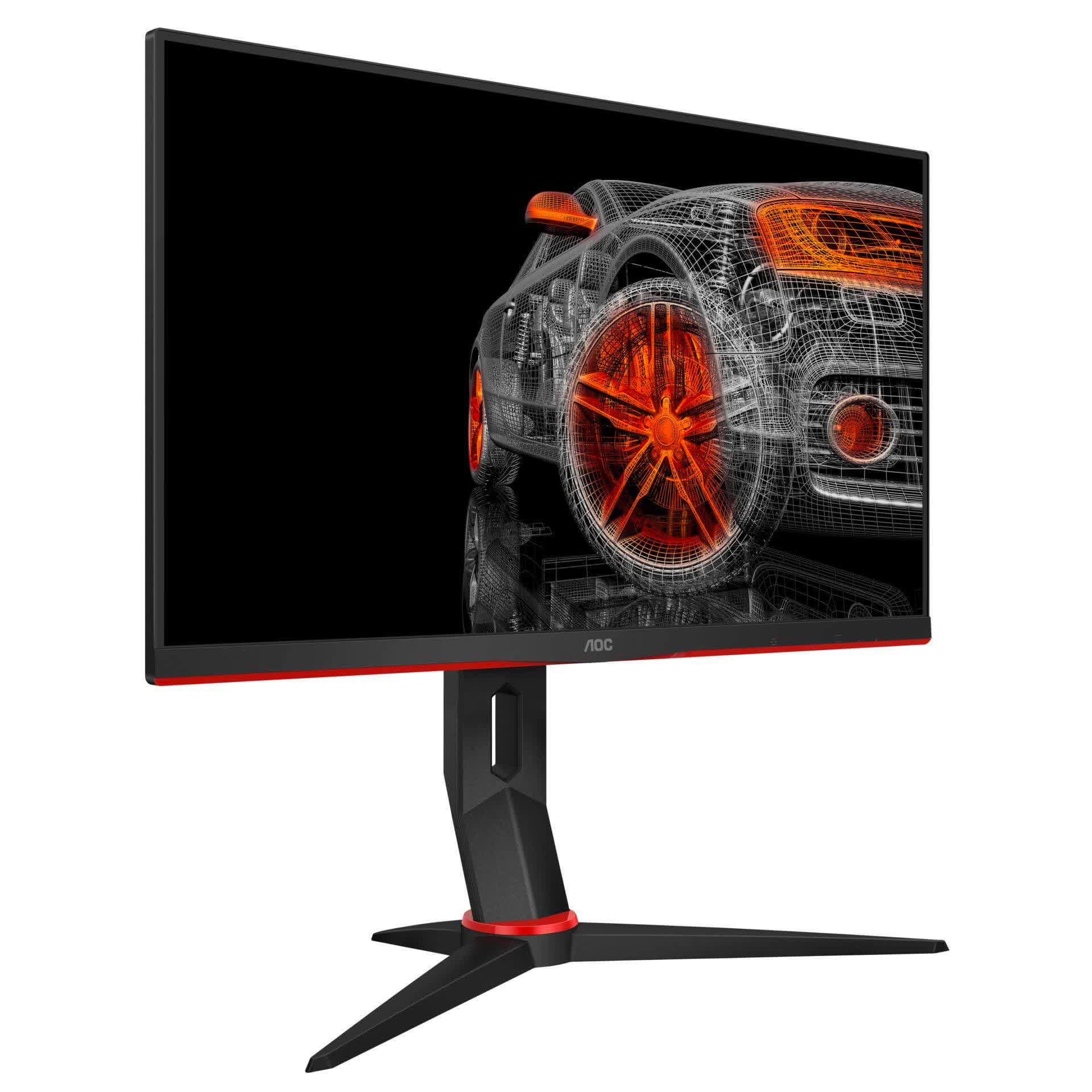
At some point we hesitated to keep recommending the 24G2, given that AOC silently changed the panel last year, without changing the name or informing customers. However, we bought the new variant and found that while it doesn't perform the same as the older variant, in some ways it's actually superior. Other aspects are solid as well, including its wide gamut support and contrast ratio, however the older 2019 variant is superior for contrast ratio and factory calibration, so it may be worth hunting the older model if you need those features. But in general this is a versatile monitor with a nice set of features and great performance at this price.
Two Alternatives: BenQ & MSI
If you are unable to find the AOC, there's a great alternative in the BenQ EX2510. While usually more expensive than the 24G2 for a similar level of performance, if pricing is similar to the 24G2 in your region then it's also a good choice.Another option worth considering is the MSI Optix G242. It uses the same panel as the newer AOC 24G2 suggesting that performance should be similar in terms of response times and color performance, although MSI will use different overdrive settings. Based on previous MSI monitors that we have reviewed, they are competent at getting decent results from a given panel.
Going Larger or Cheaper
If you want something larger, in the 27-inch range, in addition to the AOC 27G2 we'd also consider Gigabyte's G27F and M27F, which offer a classic 1080p 144Hz IPS experience. Gigabyte are mostly focusing on 27-inch 1080p monitors in their line-up, and these two options often have competitive pricing in the $220 range.
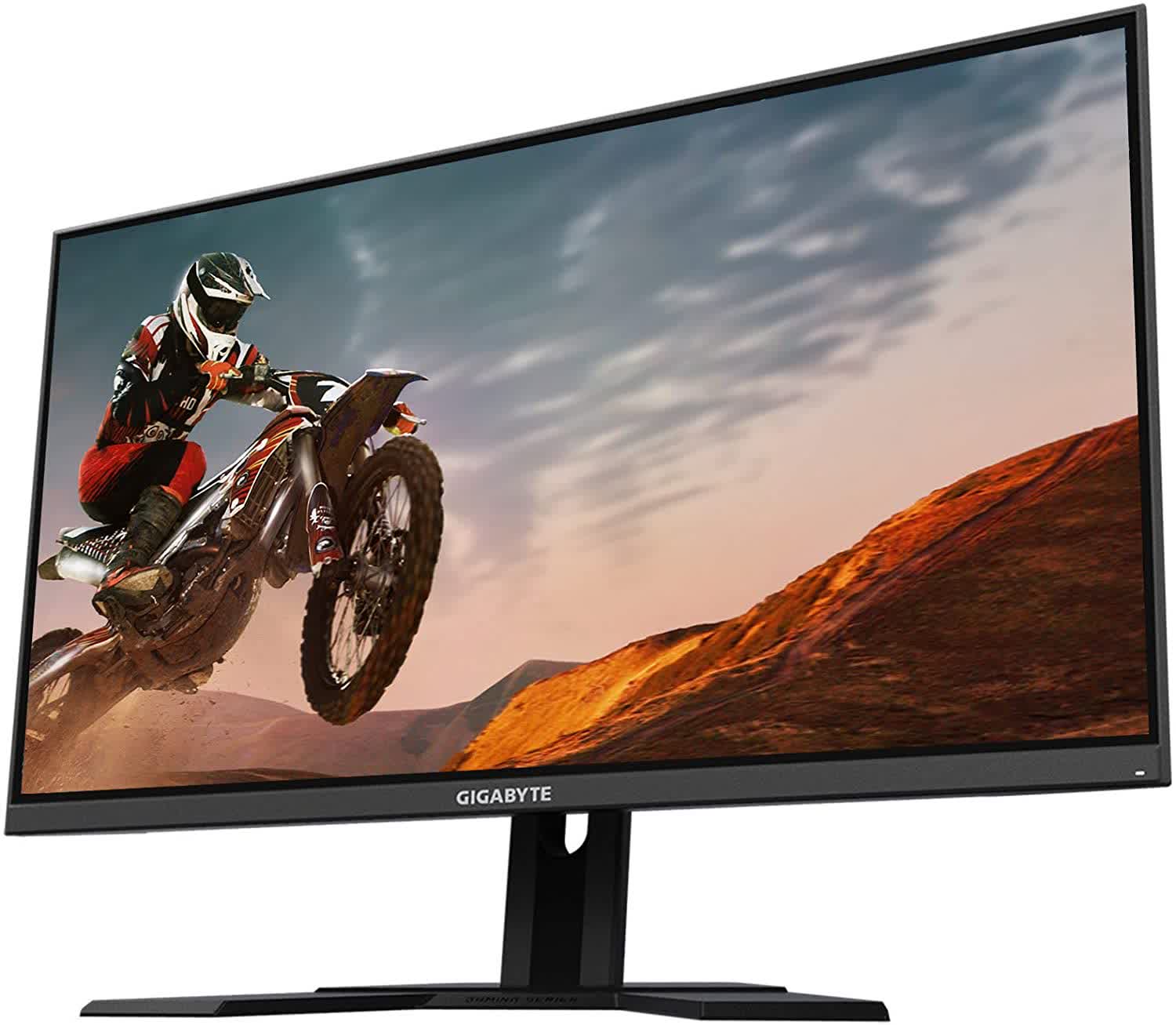
While products like the AOC 24G2 and MSI G242 can be quite affordable, there are cheaper options also worth considering. Both the Pixio PX248 Prime and the Asus VP249QGR are worthy affordable options. We've tested both the PX248 Prime and the Prime S version, and honestly we'd save the money to get the slightly cheaper non-S model, which retails for just $170. Response times are similar to the older version of the 24G2, and while factory calibration could use some work, it's an acceptable panel overall.
What Not to Buy
What we'd steer clear from at the moment are 1080p VA monitors. The value proposition isn't there compared to IPS, especially as most of these VAs use fairly mediocre panels with issues like dark level smearing and slow response times. The Asus VG24VQ, for example, is a particularly popular option, but it costs $180 - only $10 less than a decent IPS like the MSI 24G2 and $10 more than cheaper options like Asus' own VP249QGR.
As for 1080p 144Hz TN panels, again the value proposition isn't great. You can find some monitors with these specs below $150, like the Acer KG241QP, but many options we feel are overpriced. The LG 24GL600F was a great budget option on release, but the price squeeze on IPS places it around the same mark as budget IPS alternatives. You may want to consider one for backlight strobing technology, although finding a panel that does this well at 144Hz at an acceptable price is difficult.
Among gamers 1080p monitors are still extremely popular. While some will no doubt look to upgrade to a higher resolution with their next monitor purchase, if you only have around $200 to spend, you'll get by far the best experience going with something 1080p. There are several 1080p monitor types on the market, and we've been recommending VA or TN panels in this category depending on where pricing sits at any given time. But in 2020, with the release of several really high quality yet affordable IPS options, we believe the best bang for buck right now lies with this often premium monitor technology.
Currently the best budget 1080p monitor is the AOC 24G2. Not only is this the best 1080p 144Hz gaming monitor on the market overall, but thanks to a low $180 price, we also believe it's the best bang for buck 1080p monitor you can get.
The 24G2 uses a 24-inch flat 1080p 144Hz IPS panel with adaptive sync and low frame rate compensation. The gaming experience is simply great due to a combination of factors. We get a high refresh rate, great adaptive sync implementation that works flawlessly with AMD or Nvidia GPUs, and fast response times due to its use of IPS technology.
A 5ms grey to grey average using its optimal overdrive settings is a good bit faster than equivalent VA panels, and approaches some TNs that typically retail for around the same price. Throw in a backlight strobing mode and the 24G2 delivers very good motion handling, which makes it ideal for fast paced gaming.
AOC backs this up with low input lag, a high contrast ratio for an IPS panel, low power consumption and an ergonomic design that includes a height adjustable stand, which is rare among budget oriented monitors. Even factory color performance is solid with the bonus of some wide gamut coverage.
This is nearly a complete package that nails all the key areas for a gaming monitor. With that low $180 retail price that puts it around the mark of several popular TN monitors, we see no reason to choose a TN panel over this IPS model. It's a great buy.
A larger alternative, and even cheaper options
There are several other options that take our fancy in this market. If you want something larger, say 27-inches, the AOC 27G2 is the bigger brother of the 24G2 that retails for $210. We'd choose this over the similarly priced Acer Nitro VG271P, as the Acer model has a more limited stand and lacks adjustable overdrive when adaptive sync is activated. While we do believe both the 24G2 and 27G2 deliver the best bang for buck in the 1080p market, $180 might be on the upper end of your price range, and that's understandable.
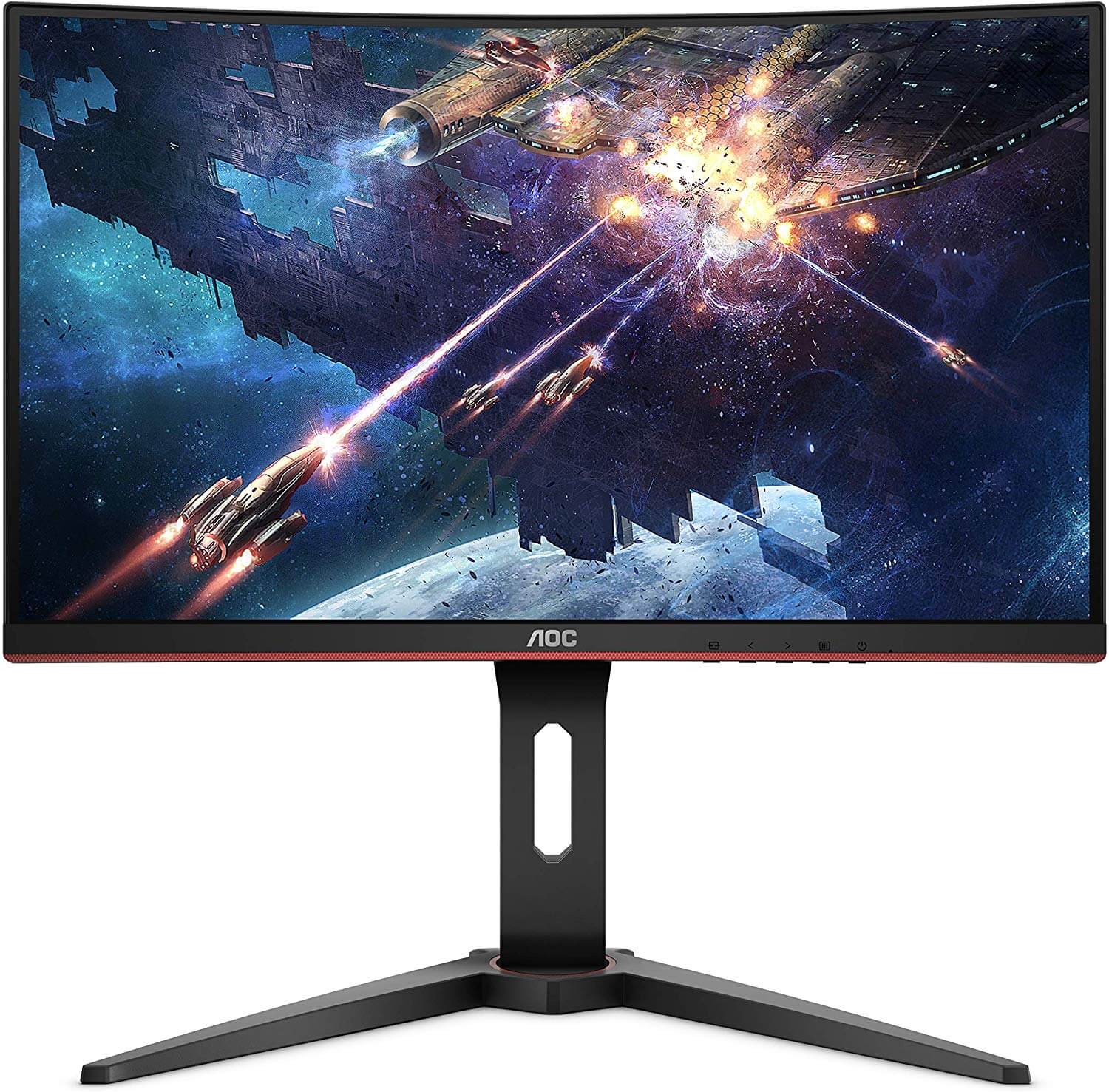
There are other 1080p 144Hz monitors available closer to $150, which is a decent saving of 17% or so. At this price point, you're looking at a curved VA monitor, but you'll still be getting a 144Hz display with adaptive sync performance. VA panels tend to be a bit slower than IPS and can suffer from an issue called 'dark level smearing', where slow response times for dark colors in particular can cause more blur than you'd like. But we think this issue tends to be overstated a bit given modern VA panels are pretty decent.
If you'd prefer to save some cash and spend $150, here's what we'd recommend: for 1080p 144Hz VA options, we have the Viotek GN24CB which comes close to the performance we see from the 24G2. It's available for just $150 in the US. It lacks a height adjustable stand and its performance isn't as strong at lower refresh rates, like 60Hz.
If you can't get the Viotek, or you want a height adjustable stand, our choice would be another AOC monitor, the C24G1. At ~$145, it packs the same height adjustable design as our top IPS recommendation although panel performance isn't as solid, but it's good enough for the price. Outside of these, we're not enthused by the value proposition of any 1080p TN monitors right now, so we'd just stick to the options we've mentioned.
Best 4K Gaming Monitor
Gigabyte M28U 28"
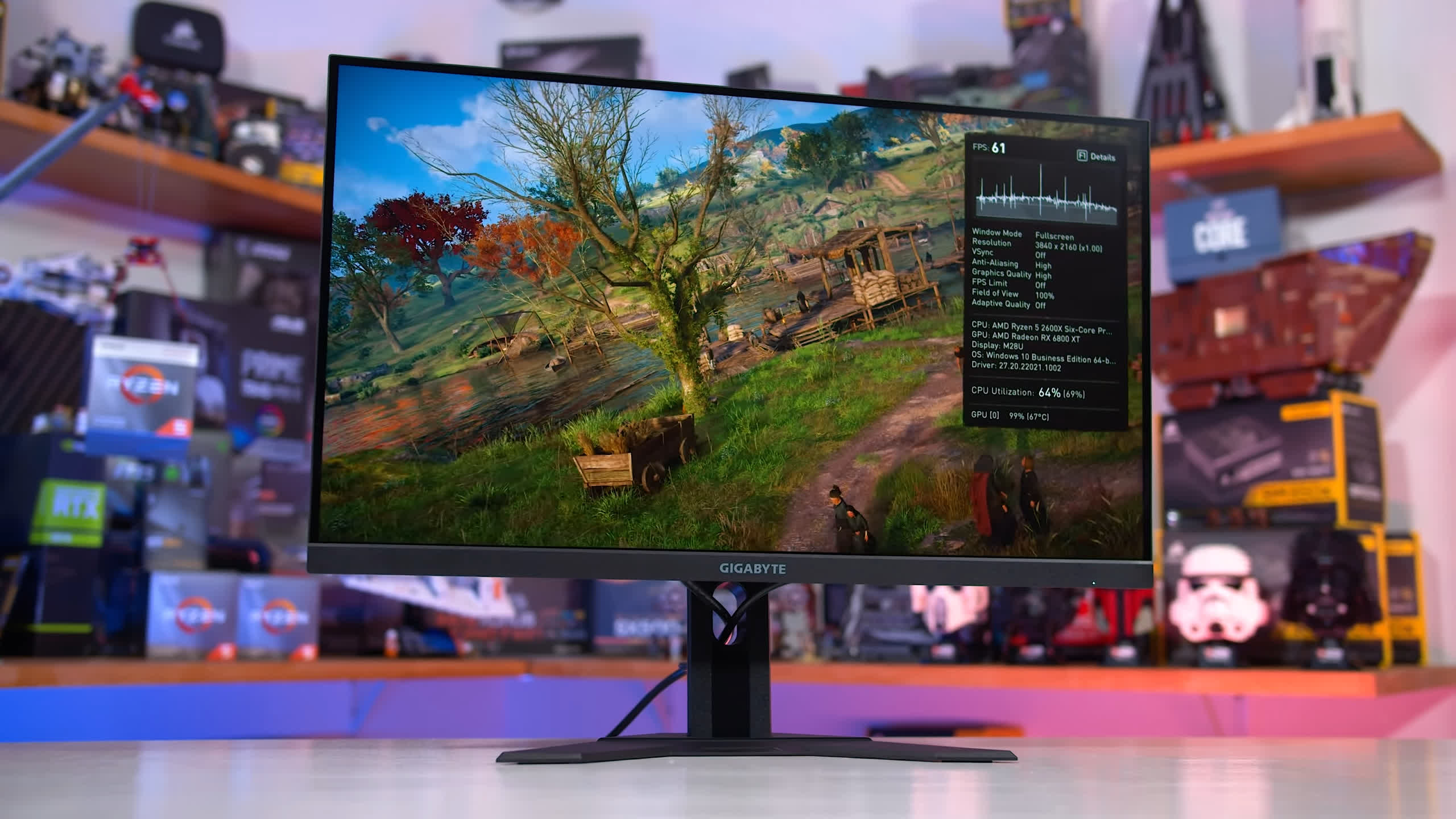
This is the category that's seen the biggest suite of improvements, especially high refresh models that are better performing and more affordable than what was available in years prior. Most of our recommendations from our recent best 4K monitors feature is still relevant today, so we'll keep this one concise and you can always go to the dedicated 4K article for more information if you need it.
Right now we'd split up the 4K choices in two category sizes: 27 and 32-inch, with the expectation of getting at least a 144Hz refresh rate to make them future proof and great for gaming. In the 27-inch category we'd look no further than the Gigabyte M28U, which offers excellent performance at an affordable price point of $650, much lower than previous years' best choices.
The M28U has very good response time performance, with an average transition of 4ms at 144Hz in our testing. It also offers good performance across the refresh range, so for those using adaptive sync variable refresh rates, you don't need to tweak overdrive settings to get the best experience. Color quality is also strong, thanks to its IPS panel, so viewing angles are excellent and it does pack a wide color gamut - though not as wide as the best monitors of today. Factory calibration is above average, there's a good sRGB mode for everyday use, and contrast is typical for an IPS panel. To top it off, Gigabyte includes a KVM switch and a height adjustable stand which are both neat feature additions.
An alternate option might be the Samsung Odyssey G7 S28 model, which is on sale at a similar price and uses the same panel, but we're yet to test it so it doesn't get a recommendation from us yet.
The LG 27GN950, and its newer variant the LG 27GP950, used to be my go-to choices. But I can't justify the $800 to $900 price tag for what ends up being only slightly better performance. The same goes for the Eve Spectrum 4K and Asus TUF Gaming VG28UQL1A.
Larger 32-inch 4K Options
At 32" the quality of monitor offerings isn't as good as it is at 27", however the additional screen real estate is something many people want, and yes, 4K looks great at this size, too.
For most people we'd recommend the Gigabyte M32U, which is the affordable and essentially identically performing version of the Gigabyte Aorus FI32U. This monitor has decent response time performance and color quality, it's not a leader in any one area but I think it will suffice for most buyers as a solid all-rounder. It's also not too expensive, at $800, which is cheaper than most other 32-inch 4K IPS 144Hz monitors.
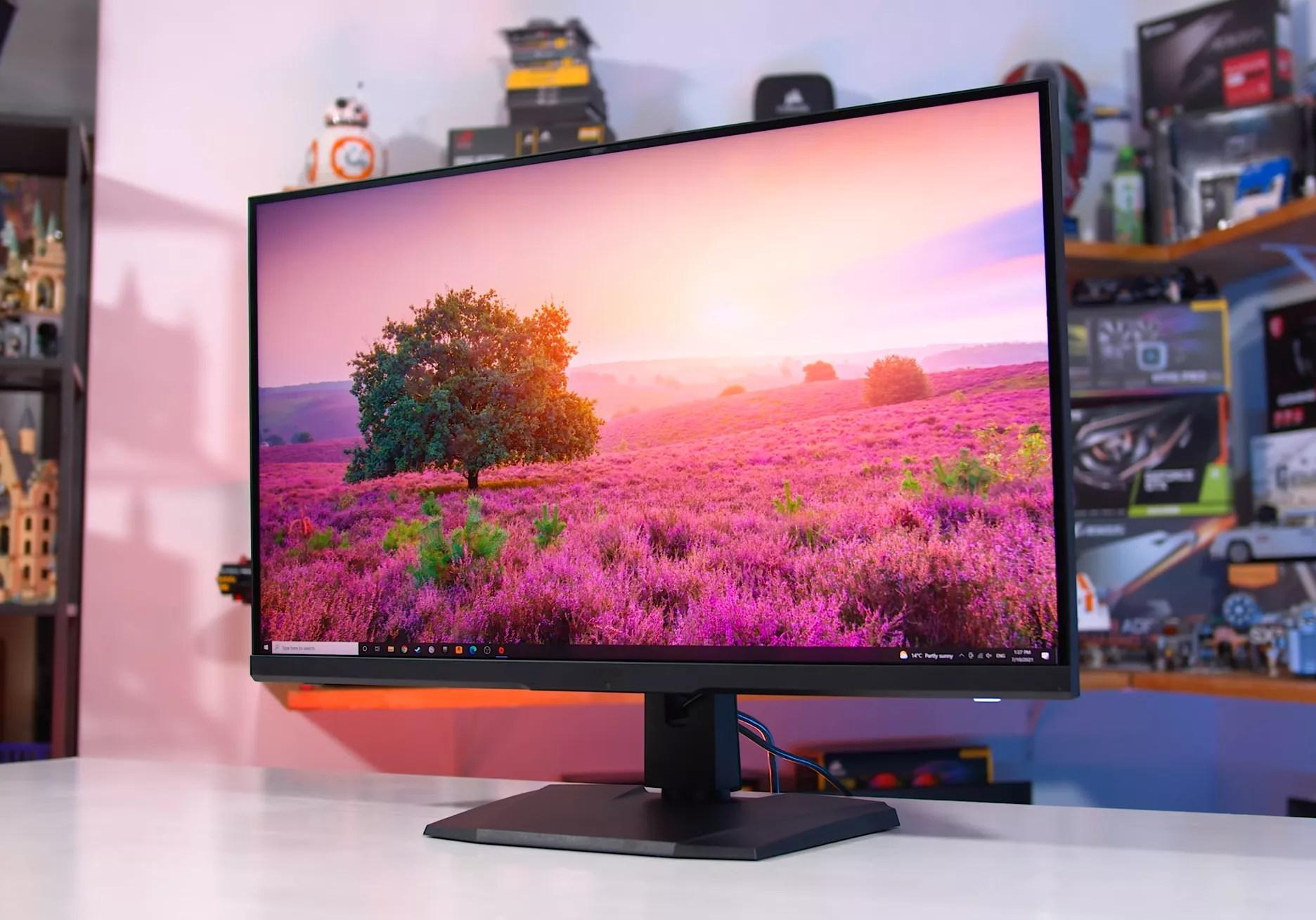
If you want a step up in terms of performance and features, then the MSI Optix MPG321UR-QD is great. Occasionally, we've seen it for as low as $750, down from the usual $900, which is a great deal if you can get it and a clear winner over the M32Q.
It's not as fast as the M32Q and response times aren't its strength, but it makes up for this with excellent color performance including a very wide color gamut, multiple well-calibrated modes for sRGB, P3 and Adobe RGB, full bandwidth HDMI 2.1 and backlight strobing with adaptive sync support simultaneously.
The MSI model is a great choice if you want something decent for productivity and creative work that can still function well as a gaming monitor through its 144Hz refresh rate, while the M32Q is more of a gaming-first option.
If you're buying a 4K high refresh gaming monitor right now, by far the best category to invest into is the 27-inch category. 4K monitors around this size deliver the best performance, and are the most affordable, making them great buys for a wide variety of use cases. But it's also important to grab something from this current generation of 4K panels, otherwise you will be missing out on key features.
One key feature is HDMI 2.1. Only the latest 4K monitors include HDMI 2.1, and honestly I wouldn't consider buying something that doesn't have it. HDMI 2.1 is required for 4K at refresh rates above 60 Hz, so if you have a PC you want to hook up over HDMI, or more crucially, a current-gen game console, then HDMI 2.1 is essential. There are lots of older 4K monitors we haven't considered because they fail this basic check.
The best 27-inch 4K monitor to buy is actually 28 inches in size, and it's the Gigabyte M28U. The M28U is typically available for $600 - $650, making it one of the most affordable 4K 144Hz displays you can buy. This monitor does support HDMI 2.1, but crucially, it's not a run-of-the-mill 4K contender with average performance; the M28U's Innolux panel is one of the best performers we've seen yet in this category.
The Gigabyte M28U has very good response time performance, with an average transition of 4ms at 144Hz. It also has good performance across the refresh range. For those using adaptive sync variable refresh rates, you don't need to tweak overdrive settings to get the best experience. This IPS monitor delivers speed in the ideal range for the latest generation of IPS panels, so there's no funny business going on here for motion performance, and this is complemented with great backlight strobing that works alongside adaptive sync. This is a better package than you get with some of our previous recommendations at 4K, like the LG 27GN950 and 27GP950.
Thanks to the IPS panel, color quality is strong and so are viewing angles, packing a wide color gamut – though not as wide as the best monitors of today. Factory calibration is above average, there's a good sRGB mode for everyday use, and contrast is typical for an IPS panel, no major issues there. To top it all off, Gigabyte includes a KVM switch and a height adjustable stand which are both neat additions.
Also consider...
Those buying a 4K monitor to use with a PlayStation 5, we'd recommend the Asus TUF Gaming VG28UQL1A instead. The Asus is very similar to the M28U, it isn't quite as a strong performer and tends to cost more (about $800), however it has more HDMI 2.1 bandwidth that's more compatible with the PS5, which gives it a leg up.
Also, if you need full DCI-P3 coverage for content creation, the Gigabyte M28U doesn't have the best P3 coverage, even though it's a wide gamut monitor. For this use case, you'll be better off with the more expensive LG 27GP950.
There are several other variants that are quite similar to the Gigabyte M28U because they use the same Innolux 28-inch 4K 144Hz IPS panel, some of which may be worth considering depending on pricing in your region. Also, do note the M28U has terrible HDR performance – it's not really an HDR monitor at all – so if you want proper HDR, that's not the monitor for you. Be aware that getting true HDR will cost you 2x to 3x the MSRP of this monitor. Don't be fooled by fake HDR monitors that add this capability to the spec sheet without including the required hardware.
If you're buying a 4K high refresh gaming monitor right now, by far the best category to invest into is the 27-inch category. 4K monitors around this size deliver the best performance, and are the most affordable, making them great buys for a wide variety of use cases. But it's also important to grab something from the current generation of 4K panels, otherwise you will be missing out on key features.
For most gamers, the 4K monitor that makes the most sense to buy also turns out to be the best value, typically sitting in the $600 to $700 range. Our recommendation hasn't changed since our last guide update. We've reviewed several other 4K monitors since and the Gigabyte M28U still comes out on top from a value perspective.
The M28U has very good response times, with an average transition in our testing of 4ms at 144Hz. It also has very good performance across the refresh range, so for those using adaptive sync variable refresh rates, you don't need to tweak overdrive settings to get the best experience. This IPS monitor delivers speed in the ideal range for the latest generation of IPS panels, this is complemented with great backlight strobing that works alongside adaptive sync. We get HDMI 2.1 support, which is essential when buying a new 4K monitor in 2022 – not all monitors have this feature, so make sure to get one that does.
The Gigabyte's color quality is strong, viewing angles are excellent and it does pack a wide color gamut – though not as wide as the best monitors of today. Factory calibration is above average, there's a good sRGB mode for everyday use, and contrast is typical for an IPS panel. To top it all off, Gigabyte includes a KVM switch and a height adjustable stand which are both neat feature additions.
There are a few worthy alternatives that we should also mention. The M28U is not an HDR monitor, so if you want proper HDR just be aware that getting true HDR will cost you 2x-3x the MSRP of this monitor, don't be fooled by fake HDR monitors that add it to the spec sheet without including the required hardware.
For PS5 / Console Gaming: Samsung Odyssey
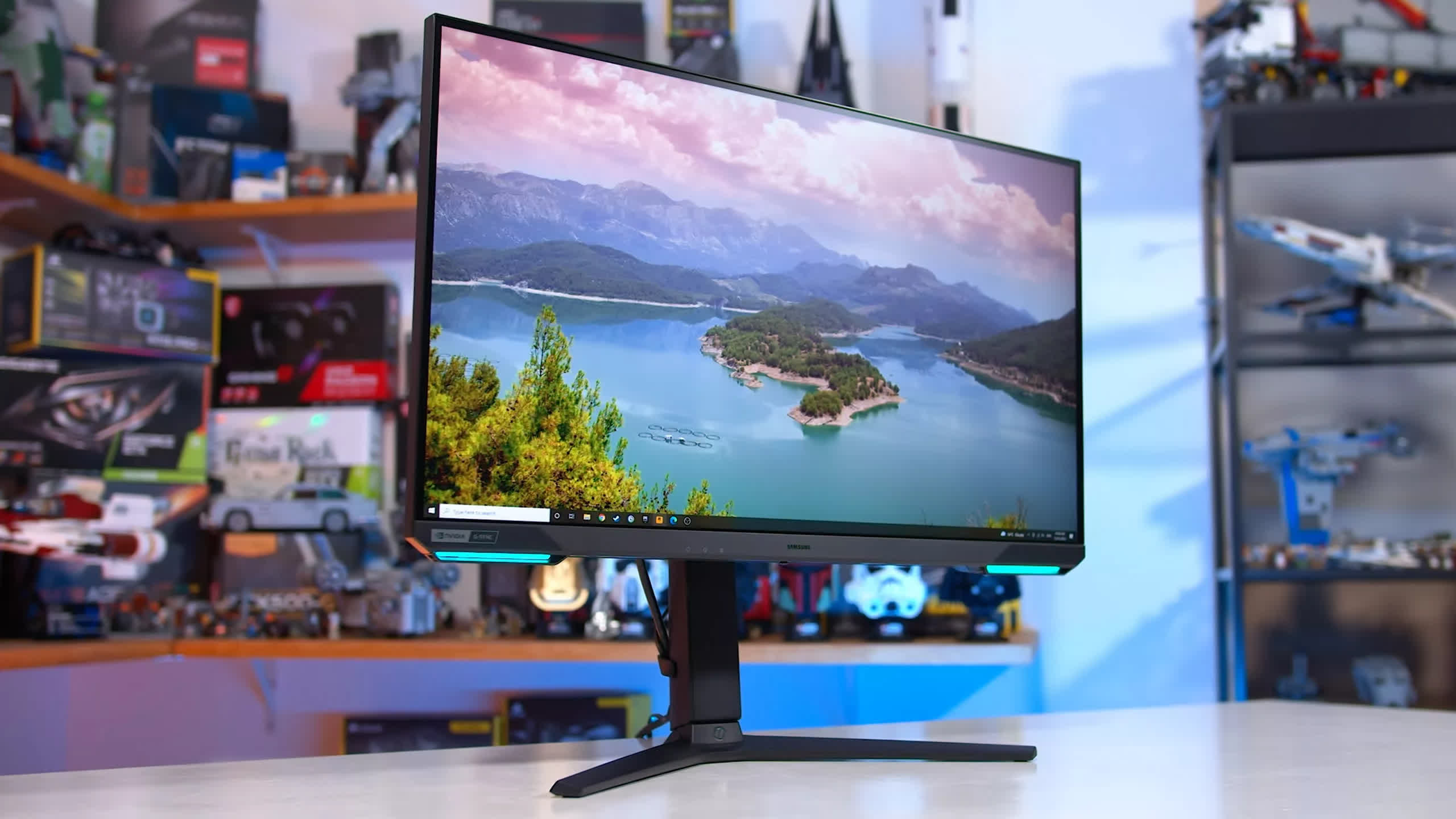
Those of you buying a 4K monitor to use with a PlayStation 5, the Gigabyte M28U is not the best choice because its HDMI 2.1 ports are limited to 24 Gbps, instead of the full 48 Gbps. In this case our recommendation goes to the Samsung Odyssey G7 S28, which does offer full HDMI 2.1 bandwidth.
The Odyssey G7 S28 is usually a little more expensive than the M28U, typically sitting at $700. Both monitors deliver very similar performance aside from HDMI 2.1, however recently we've found the Samsung going on sale for as low as $630. If the Samsung model is cheaper than the Gigabyte, we'd buy it instead.
The High-end Option: Eve Spectrum
The Eve Spectrum 4K is a really good 4K 144Hz monitor. It uses an LG panel, which has some benefits over the Innolux panel used in the Gigabyte M28U, such as a wider color gamut which is great for DCI-P3 usage and makes the display more versatile for both content creation and gaming.
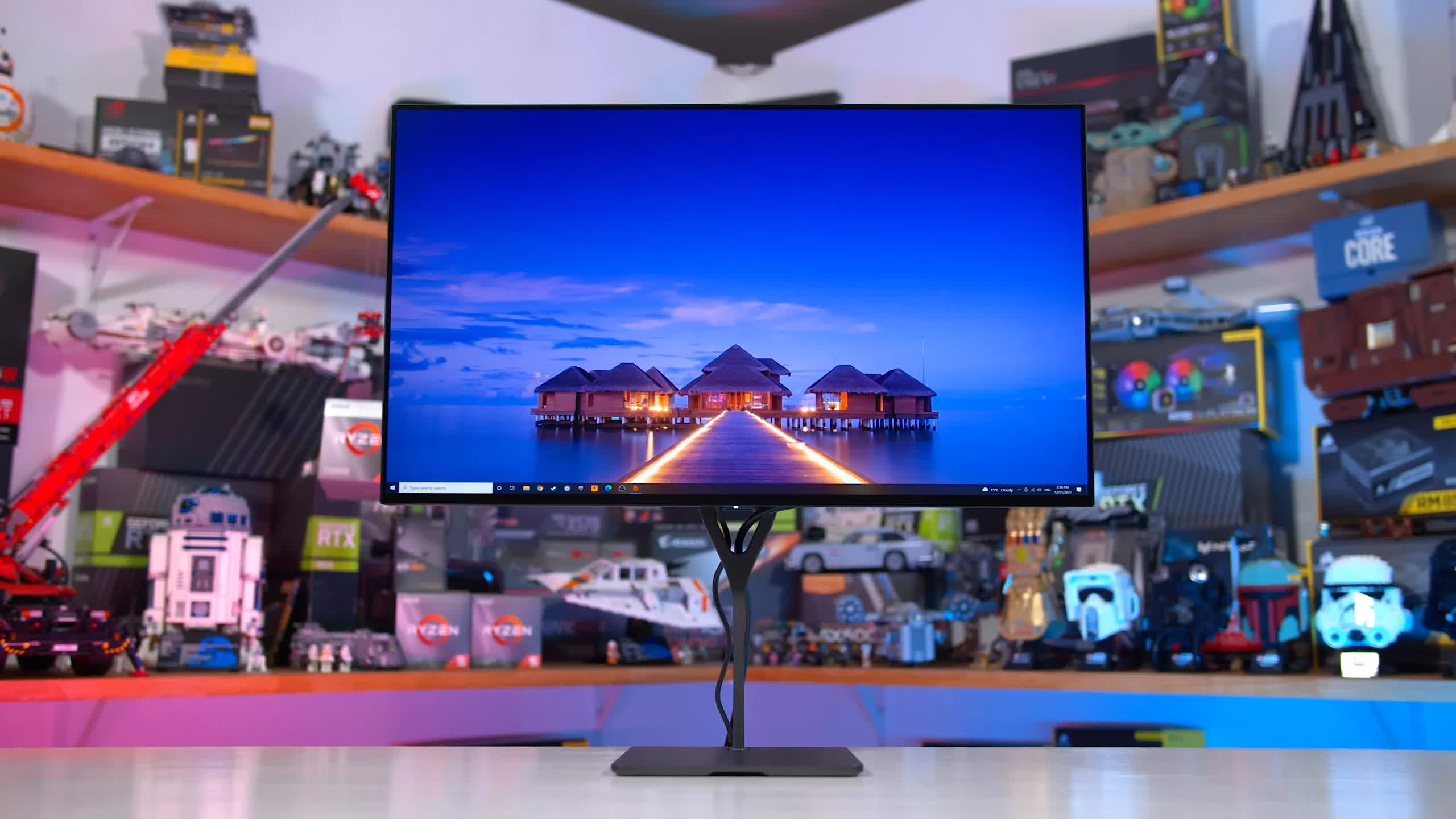
The Spectrum also has elite factory calibration, better than any other 4K display we've tested, plus more customization options like its highly tunable overdrive and backlight strobing controls.
Now, we wouldn't strongly recommend buying from Eve as a company. You can see our thoughts on why in our full Spectrum review, however since then Eve appears to be delivering on their promises and shipping monitors to customers in a more timely fashion. So we're more comfortable with a recommendation here than we were when we bought our review unit.
Do note that the Spectrum 4K is more expensive than competitors and it's hard to justify spending $900 (stand included), when the M28U and Odyssey G7 are available around $650 to $700 unless you specifically must have one of the additional features. We don't think the Spectrum offers an extra $250 of value over top competitors, but it's still worth considering if you want the best of the best.
Best Ultrawide Gaming Monitors
Gigabyte G34WQC 34" Ultrawide Curved

If you want an entry-level ultrawide with a 3440 x 1440 resolution - the minimum I would recommend when going 21:9 - then VA panels are still your best bet. However I wouldn't recommend spending more than $450 on this sort of monitor, as there are still a number of issues with the lower-end panels used in this segment. The primary concern is dark level smearing, which causes blur trails and ghosting in dark content on these basic VA panels, which is why we don't normally recommend VA for gaming. The majority of today's VA ultrawides all use some variant of Samsung's SVA panel, occasionally AU Optronics gets used, but all have issues in this area.
Outside of this, you do typically get a great contrast ratio, in the 2500:1 range or better, which delivers excellent black levels among LCD monitors. A typical curve of 1500R or 1800R is well suited to ultrawide gaming, and color performance is decent. My pick of these monitors is the Gigabyte G34WQC or AOC CU34G2X, which are both priced around $450 and offer a very similar experience. Based on my testing, the Gigabyte model is a tad bit faster and had a higher contrast ratio so that's probably what I'd go with. Depending where you live, you should also consider the Xiaomi Mi Curved 34" monitor which is surprisingly good.
However while these VA monitors aren't too bad, they also don't present a huge discount compared to today's budget 3440 x 1440 IPS ultrawide monitors, such as the Gigabyte M34WQ or Acer XV340CK, which are priced in the $450 to $500 range. These are flat IPS panels which perform better and don't have dark level smearing, due to their inherent use of IPS technology. Unfortunately we haven't tested them yet to know where they sit, so this section comes with that caveat. It's something to consider if you do your research and read other reviews.
Larger, more expensive ultrawides...
With these products in mind, I find it hard to recommend higher-end ultrawide IPS monitors like the LG 34GN850. The GN850 is great and performs well, significantly better than the VA ultrawides we've tested. But at $900, we feel going for a 32-inch 4K 144Hz gaming monitor or a high-end 1440p 240Hz display is simply better.
Then at the high end of the market, you're typically looking at less mainstream ultrawide formats. One option are 3840 x 1600 monitors, like the LG 38GN95B or MSI MEG381CQR Plus. Performance from these panels is generally excellent and in line with the best IPS monitors of today, but also this larger ultrawide format is expensive, with products starting at $1,500.
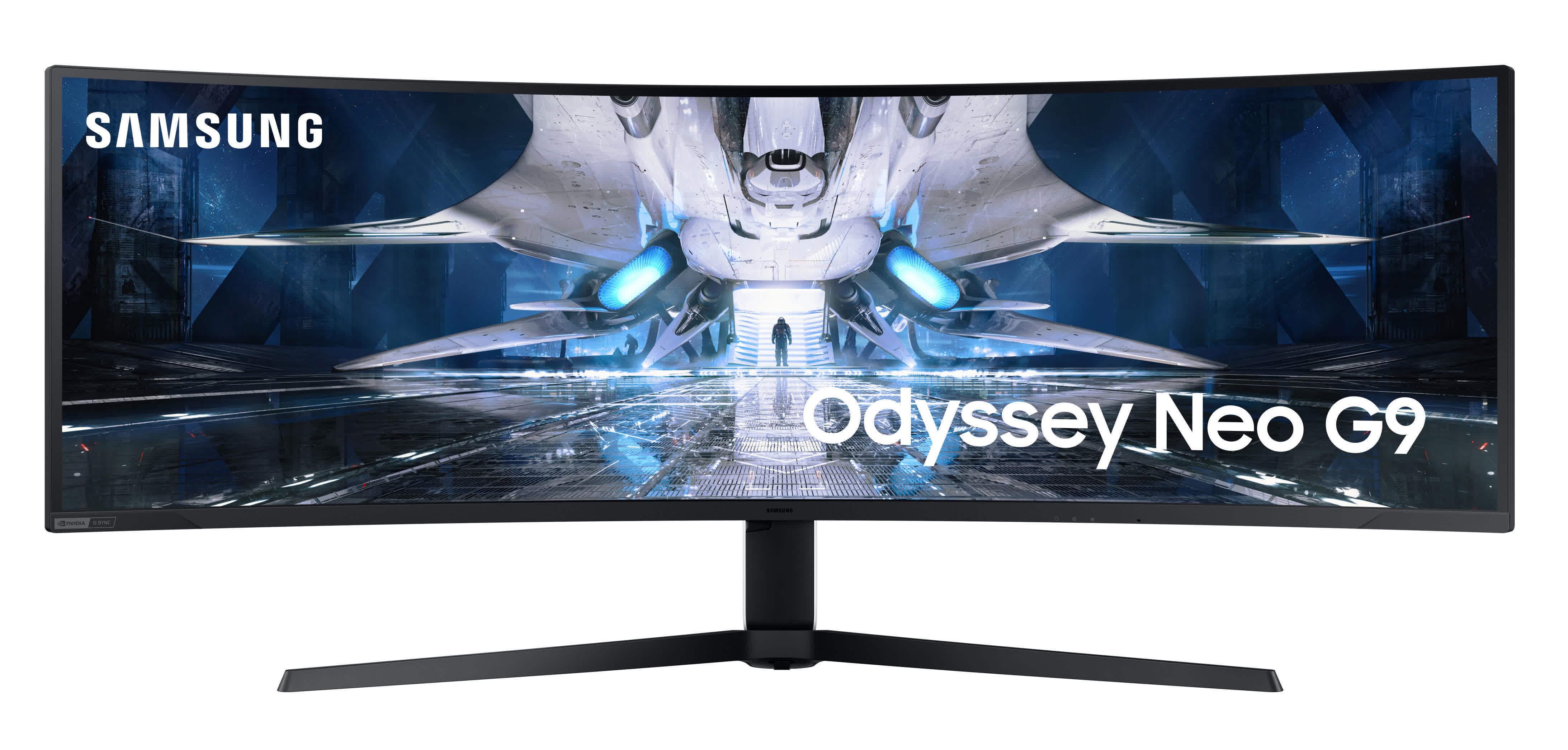
Then we also have Samsung's family of super-ultrawides, like the Odyssey G9 and Odyssey Neo G9. The standard G9 is currently on sale at an attractive $1,100 price point, which is definitely worth considering if you want a 5120 x 1440 240Hz VA panel with top-tier performance, including class-leading response times and the deep blacks on offer with VA technology. It's basically a wider version of the Odyssey G7 we recommended in the 1440p section, and I would choose this over products such as the 34GN850 and the 38-inch monitors from a moment ago, if you have the space for it.
Then we have the Odyssey Neo G9, which is great and expensive but due to Samsung's quality control issues, we'd be a tad hesitant to recommend it here. Granted, there's really nothing like it, so it's impossible to recommend an alternative, but you should be well aware of the potential issues before dropping $2,500 of your hard earned cash.
What the Neo G9 does well is adding true HDR to the already great package of the regular G9. With a 2048 zone mini-LED backlight, it elevates the gaming experience to the next level - when it works properly, which to be fair has improved with recent firmware updates.
Best HDR Gaming
LG C1 OLED 48"

If you want the best HDR gaming experience on PC today, you should check out the 48" LG C1 OLED. Until we get smaller OLED panels, or more affordable true HDR gaming monitors, buying a TV like the LG C1 is the best way to go and is also the cheapest option. Currently the LG C1 is available for just $1,090, down from its usual $1,500 asking price, which puts it at nearly a third of the price of the Asus PG32UQX (see below) for what is largely a superior HDR experience.
The OLED panel has self-lit pixels, meaning it can deliver impressive black levels and an effective infinite contrast ratio with no blooming or haloing issues from LCD-based local dimming. This leads to astonishing HDR performance with a level of contrast that LCD monitors simply cannot achieve. The C1 is also strong in terms of gaming features, with low input lag for a TV, a 120Hz refresh rate, plenty of HDMI 2.1 ports and all sorts of other potentially useful processing and TV-related features. The price tag is also very tempting.
However, as we detailed in our full review of the C1, there are drawbacks to actually using this as a monitor. It's a massive display that requires a larger than normal viewing distance. The risk of permanent burn-in and low brightness levels makes it poorly suited to productivity and everyday desktop app usage; you should really only use the C1 for content consumption. It also only has HDMI 2.1 ports, so 4K 120Hz is limited to the newest graphics cards.
If you're desperate for an HDR gaming display, we'd probably choose the LG C1 for that purpose only (gaming, not desktop work), but if that's not your case, I would genuinely consider buying something else and waiting for the HDR gaming monitor ecosystem to mature.
Beware of "HDR" monitors?
There aren't many true HDR gaming monitors on the market today. The vast majority of displays that you see advertising "HDR" capabilities don't have any meaningful HDR hardware, and therefore are fake HDR monitors. To give you a hint: if the monitor doesn't tell you the amount of local dimming zones, or if the number of zones isn't in the hundreds, don't bother buying it for its so-called HDR capabilities, because the reality is that the HDR experience will be poor at best.
With that said, there are a couple of true HDR displays on the market. One of them is the Samsung Odyssey Neo G9 we mentioned before. With the firmware fix applied, the Neo G9 is capable of great HDR, through its 2,048 zone full array local dimming backlight and respectable level of brightness. It's also a strong performer overall with its superwide screen, 240Hz refresh rate and 1440p-class resolution. The same downsides over Samsung's quality control also apply, so buy it with caution.
If you don't want an ultrawide, the best 16:9 aspect ratio HDR gaming monitor is very expensive in the Asus ROG Swift PG32UQX. It's also, all things considered, not that amazing due to its slow response time performance by modern standards, something I would have expected to be improved given its monstrous $2,900 price tag.
It also lacks HDMI 2.1, limiting its compatibility with modern 4K HDR capable gaming consoles like the PlayStation 5. However the HDR experience is undoubtedly strong thanks to peak brightness that exceeds 1600 nits, 1152 zone full array local dimming backlight and very wide color gamut. It's also a decent size at 32-inches, it uses IPS technology and features a 144Hz refresh rate. It's an expensive monitor if you have the cash to burn.
If you want the best HDR experience on PC and don't want to pay $3,000 for the PG32UQX – and who could blame you – then by far the best choice is to get a 48-inch OLED TV. Although this is clearly not a monitor in terms of size and it won't be suitable for all setups, the value proposition offered by OLED, as well as its performance in HDR games and content, totally destroys the LCD-based alternatives on the market today.
The benefits to OLED are based around its self-lit pixel technology. Because each pixel is individually lit, they can also be fully switched off to display black, leading to deep blacks, detailed shadows, and infinite contrast ratios. This is perfect for HDR where contrast is so important. With an OLED panel you don't get blooming due to low backlight zone counts, and this looks stunning in practice. Once you've used an OLED it's hard to go back.
The nature of OLEDs is also conducive to extremely fast response times, far faster than any modern LCD. Motion performance at the same refresh rate as an LCD is in the range of 5x better or more, and this allows for backlight strobing (or black frame insertion) that smokes what LCDs can do in terms of clarity. Today's 48-inch OLEDs can reach 120Hz refresh rates which isn't the fastest going around, but sufficient for a smooth, high refresh experience at 4K.
We've tested two 48-inch OLEDs for gaming and PC use, and our recommendation is to get the LG C1 OLED, or its very similar brother the LG CX OLED, depending on pricing and availability in your region. The C1 is a feature-rich TV with outstanding image quality, motion clarity, and HDR performance which is worth its asking price provided you have enough space for the large panel.
The LG C1 typically sells for around $1,500 which is not inexpensive, but not a bad value for what you're getting; it's half the price of the PG32UQX and is better in almost every way. Just make sure you have an HDMI 2.1 capable GPU from the latest Nvidia or AMD GPU series, as there's no DisplayPort on this TV - although the HDMI 2.1 ports are full bandwidth and support Dolby Vision, so the C1 is compatible with lots of other devices including media players and game consoles.
We have no trouble recommending the LG C1 to someone using it for content consumption or gaming, but there are some drawbacks that are worthy of mention. The first is the risk of burn-in, which is not that relevant for viewing mixed content, but is likely to happen if you are using the C1 as a desktop monitor. Static content like web browsers, the Windows taskbar, and other desktop apps are not ideal for OLED panels, and some of the panel protection features are ineffective or annoying for desktop use, like the automatic brightness limiter and pixel shifter.
These OLED panels haven't been designed for desktop use. Their RGBW subpixel layout is not great for text clarity, the massive size is inconvenient for a lot of setups, and brightness is low compared to today's LCDs (though acceptable for HDR content in the HDR mode). Again, amazing for content consumption, not great for desktop users.
If you truly want the best 4K HDR experience on PC and don't want to go with any of our previous options – don't want to spend $3,000 on the PG32UQX, don't want a QD-OLED ultrawide, and don't want to wait – then the next best choice is to step up to a larger format gaming monitor. And right now there's no better choice than an OLED TV.
The benefits to OLED are all based around self-lit pixel technology. Because each pixel is individually lit, they can also be fully switched off to display black, leading to extremely deep blacks, detailed shadows and infinite contrast ratios. This is perfect for HDR, as contrast is so important; with an OLED panel you don't get blooming due to low backlight zone counts, and this looks stunning in practice. Once you've used an OLED, it's hard to go back.
The nature of OLEDs is also conducive to extremely fast response times, far faster than any modern LCD. Motion performance at the same refresh rate as an LCD is in the range of 5x better or more, and this allows for backlight strobing (or black frame insertion) that smokes what LCDs can do in terms of clarity. Today's 42-inch and 48-inch OLEDs can reach 120Hz refresh rates which isn't the fastest going around, but sufficient for a smooth, high refresh experience at 4K.
Our recommendations in this segment are LG C-series OLED TVs. We've yet to test the newer C2 series, hopefully we'll be getting to that soon, but the C1 series in a 48-inch size is very impressive. The LG C2 brings with it an even smaller variant, the 42-inch model, which we feel could be a lot more suited to PC gaming and desktop use – and it should deliver similar performance to the 48-inch models we've already tested.
The 48-inch LG C1 can be found for as little as $1,000, which is great value for what it offers. If that sort of size is suitable for you, we'd have no hesitation jumping in to grab one. If you're more interested in the new 42-inch C2 model, they're just coming to market now in some countries, with an MSRP of $1,400, which is still a decent price if performance holds up.
While we'd have no trouble recommending OLEDs to someone using it for content consumption or gaming, there are some drawbacks that are important to mention. The first is the risk of burn-in, which is not that relevant for viewing mixed content, but is likely to happen if you are using the C1 or C2 as a desktop monitor. Static content like web browsers and other desktop apps are not ideal for OLED panels, and some of the panel protection features are ineffective or annoying for desktop use, like the automatic brightness limiter and pixel shifter.
These OLED panels also haven't been designed for desktop use. Their RGBW subpixel layout is not great for text clarity, the size might be inconvenient, and brightness is very low compared to today's LCDs (though acceptable for HDR content in the HDR mode). Again, great for content consumption, not so great for desktop users.
